An Oral History of Michael Jackson’s Bad
As the 25th anniversary of the album approaches, we take a look at the creation and legacy of a record-setting release

- The Legacy of Bad : “It was arguably the most transitional point in establishing his musical independence.”
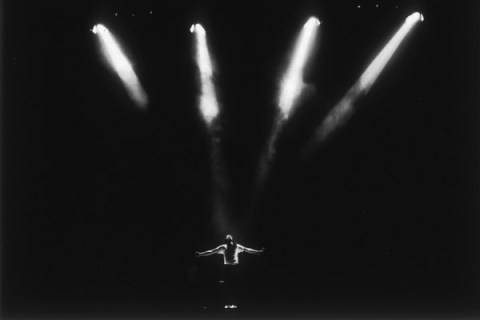
Michael Jackson performs on stage during his "BAD" concert tour held at Wembley Stadium, London on July 15, 1988.
Nine months and two weeks after the album’s release, five songs from Bad —”I Just Can’t Stop Loving You” (with Siedah Garrett), “Bad,” “The Way You Make Me Feel,” Man in the Mirror” and “Dirty Diana”— had reached the top of the Billboard Hot 100, for a collective seven weeks at the top, setting a new world record.
Lee: The legacy of the album is you have two legacies. It has something that Thriller doesn’t have: five No. 1 consecutive singles. But, number two is that it was the album that followed up Thriller , the biggest-selling album of all time.
Branca: Bad was an enormously influential album. It had an enormous impact on many of today’s biggest artists, stars, who point to that album and those videos as being influential in their careers.
Afrojack: All music has always been inspired by the next level of producing. This is a long time later. It’s fun to see how it’s still inspiring.
( MORE : The Michael Jackson Legacy: Where Are They Now?)
Branca: Like I said, I remember that conversation with Michael where I tried to take the pressure off of him and he said no, he put the pressure right back on his shoulders. I just remember how driven he was. I think he had a great time on the Bad tour. When you see that footage you can see that he’s having a really good time. He stepped out on his own; he was completely in control. I think it was a great time in Michael’s life.
Phillinganes: It was a wild ride. I do remember [the concerts at] Wembley. Princess Di showed up and Michael, that lucky dog, got to be in the receiving line. We could see her pretty well in her bright yellow dress, sitting in her box. Tons of people showed up. Naomi Campbell. Buddies of mine that I had toured with showed up. Eric Clapton. Phil Collins. Barry Gibb. They were all there. We did three at Wembley, and it’s Wembley Stadium, not arena, so that’s like at least 70,000 people. You can never imagine the feeling of watching 70,000 people light torches during “Man in the Mirror.”
Branca: [The concert footage on the BAD25 DVD is] one concert start to finish. There are no edits and piecing together of different concerts. It’s one concert, Michael Jackson at Wembley Stadium in the presence of Prince Charles and Lady Diana. He actually refers to them at the beginning and at the end of the show. We had high-quality footage of other concerts, but the audio wasn’t very good. For Wembley we had great audio but all we had visually was Michael’s VHS copy of the monitor feed.
Phillinganes: I wasn’t with him when he [watched the VHS tapes of his shows], but it was always to improve. He was very meticulous about every aspect of the show, particularly choreography, lighting. He just always strived to maintain that basis that he set for himself.
Forger: For me, it really was that point in time when Michael took the reins of his solo career and you could understand Michael’s personality musically. It’s not that you couldn’t before that, it’s just that in his solo career now he had taken all the encouragement that Quincy [Jones] had given him, and it was just that extension. This was it happening.
Phillinganes: It was arguably the most transitional point in establishing his musical independence. And the songs speak for themselves. It was just a well-rounded collection of great songs.
( MORE : The TIME Cover: Michael Jackson, 1958 – 2009 )
Forger: To me what I come away with from the Bad album is, ironically, one of the songs that Michael did not write, and that’s Man in the Mirror. Man in the Mirror to me totally represents that place that Michael started directing his energy to . You start to really see where Michael’s heart is, where his soul is, what his intent was for what he would like to accomplish with his music, and that’s a thing that in much later material is clearly evident, and this is the time when you see that coming to the forefront I think, so strongly.
Branca: Clearly Michael is an artist whose popularity will live on for generations. It’s funny, I was talking to Spike Lee about this, some artists are great singers but they don’t write their songs, and some artists are great songwriters but they’re not excellent vocalists or they can’t dance. You look at Michael, and he could write the songs, he could produce them, he could sing them, he could get out and perform and dance them, and then his sense of style sort of changed fashion trends. He’s a unique artist in that respect.
Lee: To be honest, over the years, Bad has grown in stature… Sometimes you don’t get s–t when it comes out right away. We cannot overemphasize: Bad was a follow-up to the greatest single selling album in the history of human civilization. You cannot overemphasize that.
Next BAD25 : “It’s about why he felt he was put on earth, to make music.”

An Oral History of Michael Jackson's 'Bad'
- Michael Jackson’s Bad Turns 25
- Meeting Michael: “He knew everything that had to happen in a song.”
- The Making of Bad : “He was the architect of the album in every sense of the word.”
- The Release of Bad : “One hundred million. He’d write that on the mirror and look at it every day.”
- BAD25 : “It’s about why he felt he was put on earth, to make music.”
- Michael Jackson in ‘BAD25′ to air Thanksgiving on ABC Orlando Sentinel
- Spike Lee: Michael Jackson was determined Belfast Telegraph
- StumbleUpon
Follow @TIMECulture
Old News, Vintage News, Historical News, Retro News
Photos of the michael jackson’s biggest and most iconic world tour “bad” back in 1987-1988.
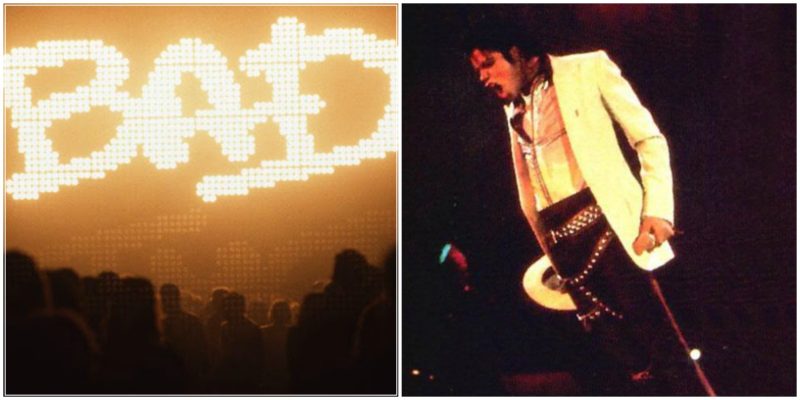
Bad was the first ever solo concert tour by Michael Jackson, launched in support of his seventh studio album Bad (1987). Sponsored by Pepsi and spanning 16 months, the tour included 123 concerts to 4.4 million fans across 15 countries making it the second highest grossing tour of 1988. When the tour concluded it grossed a total of $125 million, adding two new entries in the Guinness World Records for the largest grossing tour in history and the tour with the largest attended audience. In April 1989, the tour was nominated for “Tour of the Year 1988” at the inaugural International Rock Awards.
On June 29, 1987, Jackson’s manager Frank DiLeo announced the singer’s plan to embark on his first solo world concert tour. T he tour began in Japan, marking Jackson’s first performances in the country since 1973 as part of The Jackson 5. The first nine scheduled concerts that began on September 12 sold out within hours, and five more were added due to high demand. Over 600 journalists, cameramen and fans waited for Jackson’s arrival to the country at Tokyo’s Narita International Airport. His pet chimpanzee Bubbles, who took a separate flight, was greeted by more than 300 people.A chartered jumbo jet was used to carry 22 truckloads of equipment, along with Jackson’s entourage of 132 for the tour.The stage set used 700 lights, 100 speakers, 40 lasers, three mirrors and two 24-by-18 foot screens. Performers wore 70 costumes, four of which were attached with fiber optic lights.
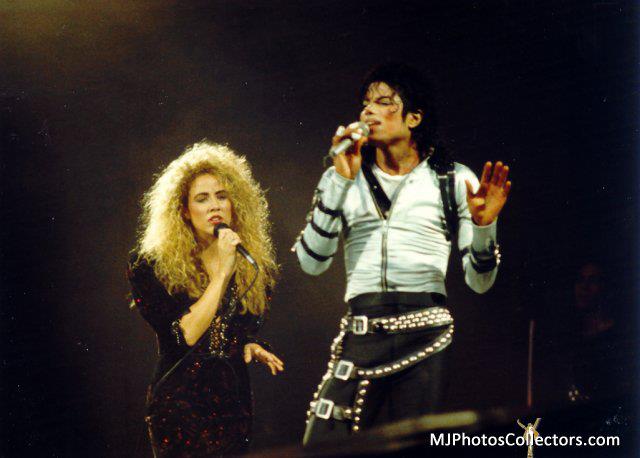
While in Tokyo, Australian pop music critic Ian “Molly” Meldrum conducted an exclusive interview Jackson and DiLeo that was featured on 60 Minutes in the United States.On September 18, Jackson was handed the Key to the City by Yasushi Oshima, the mayor o fOsaka. He was accompanied by Bubbles, who was the first animal allowed inside the city’s town hall. Jackson dedicated his Japanese concerts to Yoshiaki Hagiwara, a five-year-old boy who was kidnapped and murdered, and gave £12,000 to the parents of Hagiwara.Attendance figures for the first 14 dates in Japan totalled a record-breaking 450,000. Crowds of 200,000 were what past performers could manage to draw for a single tour.Nippon Television was a co-sponsor with Pepsi for the Japanese dates.
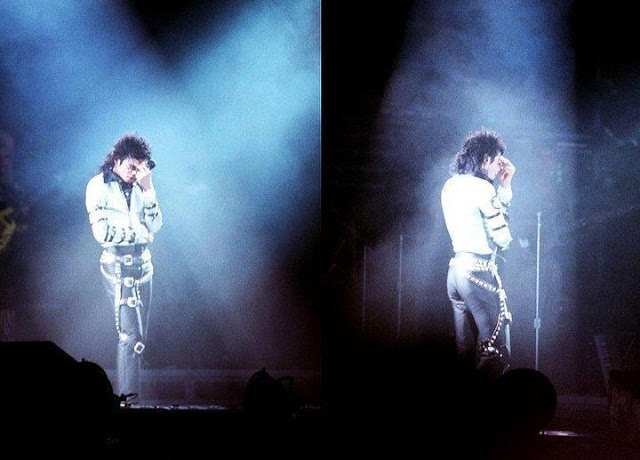
Jackson performed five concerts in Melbourne, Sydney and Brisbane in Australia in November. While off stage, he spent time visiting sick children at their homes in the Sydney suburbs.
Rehearsals for the tour’s 1988 leg took place at the Pensacola Civic Center in Pensacola, Florida from January 22 to February 18, 1988. Vincent Paterson, who had worked with Jackson on several videos, was brought in to choreograph and co-direct the tour with Michael. On the last day of preparation, Jackson allowed 420 school pupils to watch him rehearse after the children made him a rap music video in his honour.The first performances were to begin in Atlanta, Georgia, yet Pepsi officials objected as the city was home to rival drinks company Coca-Cola.For both Atlanta shows, Jackson gave 100 tickets to the Children’s Wish Foundation for terminally ill children.The first of three concerts at Madison Square Garden in New York City in March served as a benefit to raise $500,000 to the United Negro College Fund. Jackson presented a check of $600,000 to the fund. On March 2, 1988, Jackson performed at the 30th Annual Grammy Awards, receiving an enormous standing ovation after performing “The Way You Make Me Feel” and “Man in the Mirror”. Jackson’s album, Bad was also nominated for Album of the Year at the ceremony.
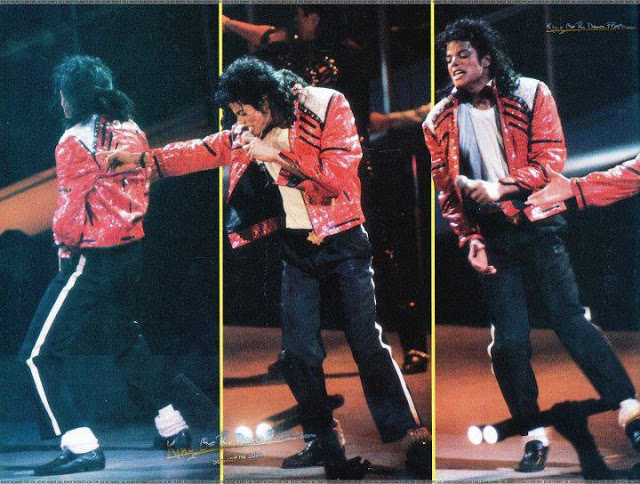
Jackson began his European tour in Rome at the Flaminio Stadium on May 23, 1988. Police and security guards rescued hundreds of fans from being crushed in the crowd of 30,000.Police reported 130 women fainted at the concert in Vienna on June 2. On June 17, Jackson travelled to the town of Vevey to meet Oona O’Neill, the widow of comic actor Charlie Chaplin. “I have fulfilled my biggest childhood dream”, said Jackson after the visit. The most successful of the European dates were those in London atWembley Stadium. Ticket demand for the five July dates exceeded 1.5 million, enough to fill the 72,000 capacity venue 20 times.Jackson performed seven sold out shows, beating the previous record held by Madonna, Bruce Springsteen and Genesis. More shows could have been added, but the venue had reached its quota for live performances.The third concert on July 16 was attended by Diana, Princess of Wales and Prince Charles. On September 8, Jackson was entered into the Guinness World Records , the first of three times from the tour alone. The Wembley shows were attended by a record 504,000 people. Management also presented him with a special award. On July 30, NBC aired Michael Jackson Around the World , a 90-minute special documenting the singer on tour. On August 29, after a birthday performance in Leeds, Jackson donated $130,000 to Give For Life. The final European show was held in Liverpool on September 11, staged at Aintree Racecourse. 1,550 fans were reported injured among the crowd of 125,000.
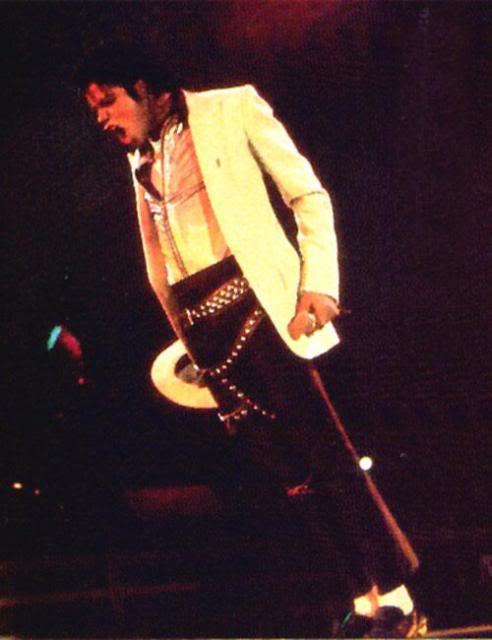

Jackson Dynasty
The Jackson Family timeline from 1928 to 2022
Bad era (1985-1989)
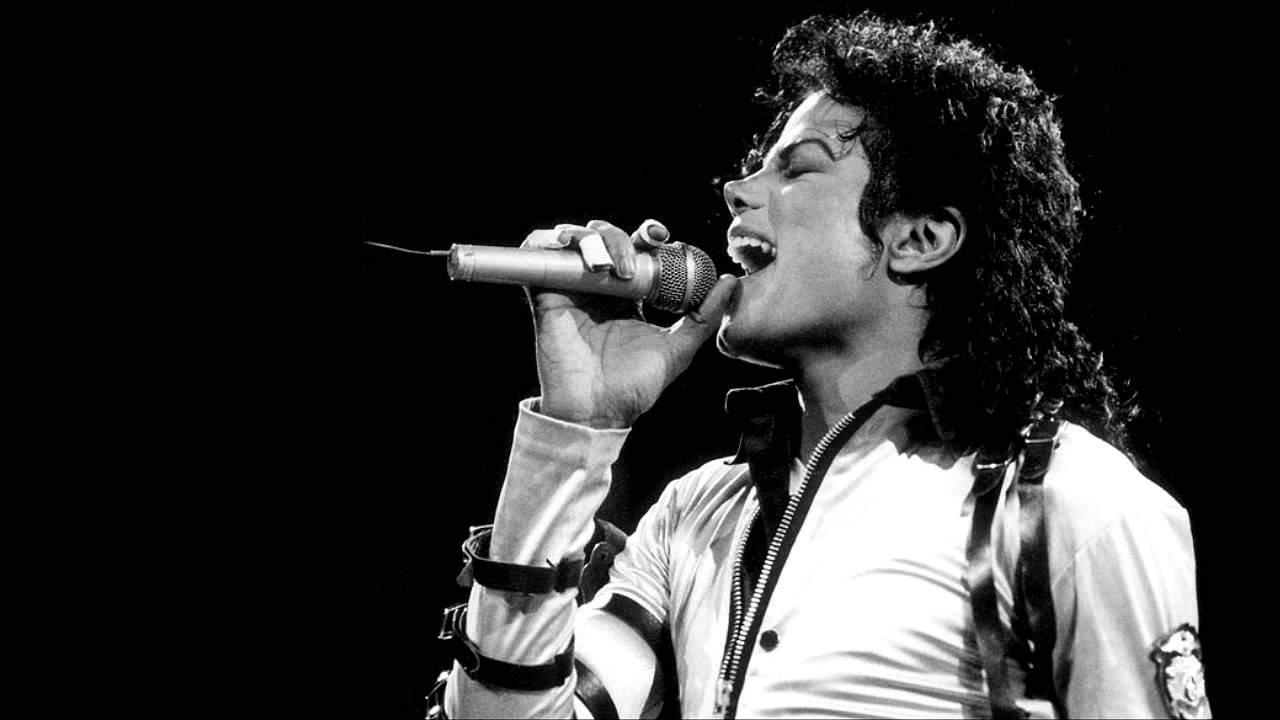
TV PERFORMANCES
January 27, 1986 : Michael arrives half-way through the American Music Awards ceremony in company of Elizabeth Taylor where he, Quincy Jones, Lionel Richie and Ken Kragen are presented with awards for “We Are The World”. Katherine, LaToya, Rebbie & Janet also attend the ceremony (Janet makes her first public appearance with her new boyfriend Rene Elizondo Jr). For the show’s conclusion, Michael joins many celebrities including Diana Ross, Janet & LaToya to sing “We Are The World”.
March 2, 1988 : At the 30th Grammy Awards at Radio City Music Hall in New York , Michael performs The Way You Make Me Feel & Man In The Mirror .
November 13, 1989 : Michael sings You Were There during the taping of the Sammy Davis Jr 60th Anniversary TV Special.
The Bad World Tour
Start date September 12, 1987 End date January 27, 1989 No. of shows 57 in North America 42 in Europe 23 in Asia 5 in Australia 123 played Attendance 4.5 million Box office US $125.8 million ($248.36 in 2017 dollars)
Set list 1987
“Wanna Be Startin’ Somethin'” “Things I Do for You” “Off the Wall” “Human Nature” “This Place Hotel” “She’s Out of My Life” The Jackson 5 Medley: “I Want You Back” / “The Love You Save” / “I’ll Be There” “Rock with You” “Lovely One” “Bad Groove” The Band Jam Section “Workin’ Day and Night” “Beat It” “Billie Jean” “Shake Your Body (Down to the Ground)” “Thriller” “I Just Can’t Stop Loving You” duet with Sheryl Crow “Bad”
Set list 1988-1989
“Wanna Be Startin’ Somethin'” “This Place Hotel” “Another Part of Me” “I Just Can’t Stop Loving You” duet with Sheryl Crow “She’s Out of My Life” The Jackson 5 Medley: “I Want You Back” / “The Love You Save” / “I’ll Be There” “Rock with You” “Human Nature” “Smooth Criminal” “Dirty Diana” “Thriller” “Bad Groove” The Band Jam Section “Workin’ Day and Night” “Beat It” “Billie Jean” “Bad” “The Way You Make Me Feel” “Man in the Mirror”
First Leg : Japan 1987
August : Michael rehearses for the Bad World Tour in Los Angeles.
September 12+13+14 : Michael kicks off his first solo tour at the Korakuen stadium in Tokyo.
September 19+20+21 : Concerts at the Hankyu Nishinomiya stadium in Nishinomiya.
September 25+26+27 : Concerts at the Yokohoma stadium in Yokohama.
October 3+4 : Concerts at the Yokohoma stadium in Yokohoma.
October 10+11+12 : Concerts at the Osaka stadium in Osaka.
Second leg : Australia 1987
November 13 : Concert at the Olympic Park stadium in Melbourne.
November 20+21 : Concerts at the Parramatta stadium in Sydney .
November 27+28+29 : Concerts at the Brisbane Entertainment Centre in Brisbane. Stevie Wonder & Michael perform “Just Good Friends” live on stage!
Third leg : North America 1988
February 5-18 : Rehearsals for the Bad Tour second leg take place at the Pensacola Civic Center in Pensacola (Florida).
February 17 : Mary Hart from Entertainment Tonight visits Michael during dress rehearsals of the Bad Tour at the Pensacola Civic Center in Pensacola (Florida). Michael Michael gives a short interview to Mary and accepts to be filmed while rehearsing with his band and dancers.
February 18 : On the last day of dress rehearsals, Michael allows 420 school pupils to watch him rehearse. The full show is rehearsed and taped.
February 23+24 : Michael kicks off the US leg of the Bad Tour at the Kemper arena in Kansas City (Missouri)
March 3+4+5+6 : Concerts at the Madison Square Garden in New York City. During the show, Tatiana Thumbzten replaces Sheril Crow on The Way You Make Me Feel and kisses Michael on the mouth! Siedah Garrett sings I Just Can’t Stop Loving You with Michael & Steve Stevens plays electric guitar on Dirty Diana!
March 12+13 : Concerts at the St Louis arena in St Louis (Missouri).
March 18+19 : Concerts at the Market Square arena in Indianapolis (Indiana)
March 20 : Concert at the Freedom Hall in Louisville (Kentucky).
March 23+24+25 : Concerts at the McNichols Sports arena in in Denver (Colorado)
March 30+31 + April 1 : Concerts at the Hartford Civic Center in Hartford ( Connecticut )
April 8+9+10 : Concerts at the Summit in Houston (Texas)
April 13+14+15 : Concerts at the Omni Colisuem in Atlanta.
April 19+20+21 : Concerts at the Rosemont Horizon in Rosemont (northwest of Chicago) where Michael is presented with the keys to the city by mayor Eugene Sawyer.
April 25+26+27 : Concerts at the Reunion arena in Dallas (Texas)
May 4+5+6 : Concerts at the Met Center in Minneapolis (Minnessota) which end the first leg of the tour.
Fourth leg : Europe
May 23 : Michael kicks off the European leg of the Bad Tour at the Stadio Flaminio in Rome..
May 24 : Second concert in Rome .
May 29 : Concert at the Stadio Olimpico di Turino in Turin, Italy.
June 2 : Concert at the Praterstadion in Vienna, Austria.
June 5+6+7 : Concerts at the Feijenoord stadium in Rotterdam, Holland.
June 11+12 : Concerts at the Eriksberg in Gothenburg, Germany.
June 16 : Concert at the St Jakob Stadium in Basel, Switzerland, attended by Elizabeth Taylor & Bob Dylan.
June 19 : Concert at the Reichstag Grounds in Berlin, Germany.
June 23 : Concert at the Stade de Gerland in Lyon, France.
June 27+28 : Concert at the Parc des Princes in Paris attended by Grace Jones & Johnny Halliday among others.
July 1 : Concert at the Volksparkstadion in Hambourg, Germany.
July 3 : Concerts at the RheinEnergieStadion in Cologne, Germany.
July 8 : Concert at the Olympiastadion in Munich, Germany.
July 10 : Concert at the Hockenheimring in Hockenheim, Germany.
July 14+15+16+22+23 : Michael performs 5 concerts at the Wembley stadium in London attended by Jack Nicholson, George Lucas, Harrison Ford & Jane Seymour among others.
July 26 : Concert at the Cardiff Arms Park in Cardif, Wales.
July 30+31 : Concerts at the Páirc Uí Chaoimh in Cork, Ireland.
August 5 : Concert at the Estadio Municipal de Marbella in Marbella, Spain.
August 7 : Concert at the Vicente Calderón Stadium in Madrid, Spain.
August 9 : Concert at the Camp Nou in Barcelona, Spain.
August 11 : Concert at the Stade Charles-Ehrmann in Nice, France.
August 14 : Concert at the Stade Richter in Montpellier, France.
August 19 : Concert at the Stade Olympique de la Pontaise in Lausanne, Switzerland.
August 21 : Concert at the Talavera Wiesen in Wurzburg, Germany.
August 23 : Concert at the Werchter Festival Grounds in Werchter, Belgium.
August 26+27 : Concerts at the Wembley stadium in London. Michael dedicates “I Just Can’t Stop Loving You” to Elizabeth Taylor.
August 29 : Concert at the Roundhay Park in Leeds, England, where 90 000 fans sing Happy Birthday to Michael!
September 2 : Concert at the Niedersachsenstadion in Hannover, Germany.
September 4 : Concert at the Parkstadion in Gelsenkirchen, Germany.
September 6 : Concert in Linz, Austria.
September 10 : Concert at the National Bowl in Milton Keynes, England.
September 11 : Michael performs his last European concert at the Aintree Racecourse in Liverpool, England, in front of 125 000 people!
5th leg : North America
September 26+27+28 : Concerts at the Civic Arena in Pittsburg (Pennsylvania).
October 3+4/5 : Concerts at the Meadowlands Arena in Rutherford (New Jersey).
October 10+11 : Concerts at the Richfield Coliseum in Richfield.
October 13/17/18/19 : Concerts at the Capitol Center in Landover (Maryland)
October 24+25+26 : Concerts at The Palace of Auburn Hills in Auburn Hills, Michigan.
October 29 : Michael cancels three concerts in Tacoma (Wahington) when his vocal cords become swollen.
November 7+8+9 : Concerts at theIrvine Meadows Amphitheatre in Irvine Meadows, Laguna Hills (California)
November 13 : Concert at the Los Angeles Memorial Sports Arena in Los Angeles. Many members of the Jackson family attend the show. Michael cancels five concerts in Los Angeles due to illness. They are rescheduled for January 1989.
6th leg : Japan 1988
December 9+10+11+17+18+19+24+25+26 : Michael performs nine concerts at the Tokyo Dome in Tokyo, Japan.
Final concerts 1989
January 16+17+18+26+27 : Michael plays the last final concert of the Bad World Tour at the Los Angeles Memorial Sports Arena in Los Angeles.
Creative Directors Michael Jackson (lead vocals, Co-Director, dancer and co-choreographer) Peggy Holmes (Assistant Director) Vince Paterson (Co-Director, Choreographer) Tom McPhillips (Set Designer) Allen Branton (Lighting Designer) Production Frank Dileo (Personal Management) Sal Bonafede (Tour Coordinator) John Draper (Tour Manager) Benny Collins (Production Manager) Nelson Hayes (Production Coordinator) Rob Henry (Production Coordinator) Gerry Bakalian (Stage Manager) Tait Towers, Inc. (Set Construction) Clair Bros. (Sound) Kevin Elison (house sound engineer) Rick Coberly (Monitor Engineer) Ziffren, Brittenham and Branca (Attorneys) Gelfand, Rennert and Feldman (Business Management) Solters/Roskin, Friedman Inc.(Public Relations) Bob Jones (V.P. of Communications, MJJ) Glen Brunman (Media Relations, Epic Records) Gretta Walsh Of Revel Travel (Travel Agent) Dancers Randy Allaire Evaldo Garcia Dominic Lucero LaVelle Smith Jr. Band Greg Phillinganes (Lead keyboards, synthesizers, musical director) Rory Kaplan (keyboards, synthesizers) Christopher Currell (Synclavier, digital guitar, sound effects) Ricky Lawson (Drums, percussion) Jennifer Batten (Rhythm and lead guitar)[41] Jon Clark (Lead and rhythm guitar) Don Boyette (bass guitar, synth bass) Background vocals Kevin Dorsey Darryl Phinnessee Dorian Holley Sheryl Crow Stylists and Assistant Karen Faye (Hair & Make-up) Tommy Simms (Stylist) Gianni Versace, Dennis Tompkins & Michael Bush (Costumes Designed) Jolie Levine (Michael’s Personal Assistant) Meredith Besser (Assistant)
LIVE ALBUMS/TV BROADCASTS/COMMERCIAL RELEASE
Live at Wembley July 16, 1988 : Released on September 18, 2012
Live at Wembley July 16, 1988 is a live concert CD/DVD by American recording artist Michael Jackson released on September 18, 2012. It was included with the Bad 25 reissue, as well as by itself. This particular concert took place on July 16, 1988, at Wembley Stadium in Wembley, London, to a sold-out crowd of 72,000, which included Diana, Princess of Wales and Charles, Prince of Wales. The DVD also includes “The Way You Make Me Feel”, from July 15 (the song was not performed on July 16 due to a late start of the show) and “I Just Can’t Stop Loving You”, and “Bad”, performed on September 26, 1987, in Yokohama, Japan. The Bad 25 deluxe package also contains a CD of the audio from the July 16 concert as well, with audio edited down to 80 minutes from the original two hours.
Other concerts were filmed professionally and leaked online :
Michael Jackson, 1st concert in Tokyo, September 12, 1987
Michael Jackson | Bad Tour live in Tokyo, Japan – Sept. 13, 1987 (Silver Shirt)
Michael Jackson Bad Tour Yokohama on September 26, 1987
Michael Jackson – Live In Rome | 23rd May 1988 – Bad Tour (Full Concert)
Michael Jackson | Bad World Tour in Tokyo, 1988 (30 minutes)
Michael Jackson – Bad World Tour Live Los Angeles 1989 Last Concert – [HD]
Previous era : Thriller/Victory era (1982-1984)
Next era : Dangerous era (1990-1993)
Share this:
Published by Fred Colby
View all posts by Fred Colby
Leave a comment Cancel reply

- Already have a WordPress.com account? Log in now.
- Subscribe Subscribed
- Copy shortlink
- Report this content
- View post in Reader
- Manage subscriptions
- Collapse this bar
Bad at 25: Looking back at how a lost, lonely Michael Jackson found his way
“ Thriller is the sound of absolute victory, where the hero is carried into the sunset on the shoulders of friends; Bad is what happens the following morning, when the hero must face living the rest of his life in the shadow of all that, with old, unshakeable demons still intact.” — Steven Hyden, We’re No. 1
Is it possible for an octuple-platinum album to be underrated? For decades, Michael Jackson’s Bad has been defined more by what it didn’t do than what it did. Going into Bad , Jackson was the biggest star in the world, coasting on Thriller , the biggest-selling album of all time. But rumors about Jackson’s bizarre personal life were already starting to leak, and some of the pop star’s business decisions—Pepsi endorsements, exorbitantly priced concert tickets, buying the publishing rights to the Lennon/McCartney song catalog out from under the nose of his pal Paul McCartney—made Jackson seem more mercenary than his upbeat, childlike image led fans to believe. As Steven Hyden explained in his “ We’re No. 1” column for this site , Bad represented a clear demarcation point for many, between the nimble, creative Michael Jackson and the lead-footed, self-promoting “King Of Pop.”
Related Content
Now, though, with the 25th anniversary of the release of Bad —celebrated by a new deluxe CD reissue and a DVD of a 1988 Wembley Stadium concert—the push is on to rehabilitate the record’s rep. This is, after all, the fifth-best-selling album of all time by some measures, and one that set a record by generating five consecutive No. 1 singles on the Billboard Hot 100. And as Spike Lee ’s new documentary Bad 25 notes, the album, its videos, and the subsequent tour all had a huge impact in the African-American community, particularly among budding musicians. Kanye West, Mariah Carey, Cee Lo Green, and ?uestlove are just a few of the artists who testify to Lee about what Bad meant to them. Lee also gets appreciations from the people who worked with Jackson on the album and its peripherals, all of whom rave about the man’s genius, and provide persuasive examples.
Bad 25 is currently on the festival circuit—it played Venice and Toronto earlier this month—and is scheduled to air on ABC in November. It’s a good documentary, but a bit scattered and incomplete. Because Jackson all but shut himself off from the media around the time of Bad , his own perspective is largely missing from Lee’s film. And Bad 25 raises all kinds of provocative questions—about the rumors surrounding Jackson and the degree to which his race affected the press’ reaction to his work—that are swiftly dropped. Perhaps because the documentary was made in conjunction with the Bad anniversary, Lee tends to skip ahead to the next topic rather than digging deeper.
Still, Bad 25 is successful at creating a convincing counter-narrative to the pervasive “…and here’s where Michael Jackson lost his soul” take on Bad . From the point of view of the people who were inside his circle, Jackson post- Thriller was reacting heroically to some difficult circumstances. That album was an unprecedented phenomenon: an international sensation that just kept generating hits and sales, making Jackson so famous that he couldn’t go out in public without a wig and heavy makeup. Yet Jackson didn’t always get his due credit for Thriller . Producer Quincy Jones and his team of songwriters and session men were often cited as Thriller ’s real creative forces, even though Jackson wrote and co-produced almost half of the album. And Jackson didn’t tour behind Thriller , choosing instead to make another album with his brothers and tour with them , in 1984. So to some extent, Jackson regarded Bad as his real solo debut. He wrote nine of its 11 songs, and co-produced them all, with Jones. He was heavily involved with the marketing and the videos, and he backed the whole enterprise with his first-ever solo tour, which circled the globe and ran for well over a year.
Frankly, the level of calculation that Jackson brought to Bad still affects the album’s overall quality. In Bad 25 , Jackson’s team admits he had wanted to work with Prince, and to duet with Whitney Houston, because he saw them as his competition in the marketplace. (Instead, the big star duet on Bad is with Stevie Wonder, on the pleasant but forgettable “Just Good Friends,” which is notable primarily because Wonder’s magnificent run of albums during the ’70s provide something of a model for Jackson’s pop/rock/R&B crossover in the ’80s.) The sound of Bad seems inorganically of-the-moment, from the heavy use of electronics to the touches of rock, gospel, and worldbeat.
A quarter-century after its release, Bad at times sounds more like a greatest-hits collection than one cohesive vision. For example, it’s odd that “Man In The Mirror” and “I Just Can’t Stop Loving You” emerged from the same album’s recording sessions, given that the former sounds more like the pop of the ’90s, while the latter’s more ’70s-ish. It’s odd also that on its original vinyl and cassette versions, Bad ends with “Smooth Criminal,” which is an energetic song, but hardly a grand finale. Meanwhile, for anyone who was alive and aware of popular culture in the late ’80s, it’s hard to hear Bad ’s title track and not think of Pepsi commercials, which robs the song of some sting.
There’s a fair amount of contrivance, too, to the personae Jackson adopts throughout Bad, from street tough to lovesick horndog. This is where the wide awareness of Jackson’s private life works against him. Whether Jackson really slept with the Elephant Man’s bones (or worse), the public knew Jackson wasn’t some badass stud, beating up dudes and bedding ladies by the score. In other words, Jackson wasn’t just wearing disguises when he went on outings; he was playing dress-up with his songs, too. Outside of “Leave Me Alone” (a CD bonus track that can be read as Jackson’s angry response to his critics) and “Dirty Diana” (reportedly based on Jackson’s own experiences with groupies), Bad isn’t exactly confessional.
But that doesn’t make it impersonal. There are messages encoded with Bad , some of them fairly obscure (such as the “shamone” in “Bad,” which was apparently an homage to Mavis Staples, who would interject that non-word in live performances) and some more overt (such as the entirety of the ballad “Liberian Girl,” which was a nod to Africa, and a way of showing that Jackson could create an exotic sonic environment just as evocative as one of Wonder’s or Paul Simon’s). Even the “your butt is mine” posturing in “Bad” itself had meaning, as Jackson sought to respond to the aggression of hip-hop in his own inimitable way.
Make no mistake: Jackson was weird. He looked weird, and he acted weird. Maybe his behavior can be explained—though not excused—by his growing up in the spotlight, in a family dynamic that has been described as abusive. But whatever did or didn’t happen behind the gates of his Neverland Ranch, it’s all but impossible to sort out now, and not really fair to try to adjudicate any of it in an essay about one album’s legacy.
What is relevant to a discussion of Bad is that by 1987, Jackson was one of the most talented people in show business, and yet, in many ways, still a misfit. His particular song-and-dance skill set didn’t carry as much clout in an age where big-screen musicals were rare, and Jackson’s sense of style was so burned into the public consciousness that it would’ve been difficult for him to appear in a movie or on television as anything other than himself. So Jackson became the impresario of a new branch of the entertainment business: The Michael Jackson Industry. He made his own “short films”—he wouldn’t let them be called “videos”—and used them to show off what he could do as a hoofer and an onscreen personality. He starred in the 3-D science-fiction attraction “Captain EO” for Disney theme parks, trading on his own fantastical image. Even when he played a tough guy in his own films, the characters were graceful, colorful, and heavily MJ-ified.
Some of the most valuable parts of Bad 25 are the ones that show Jackson on the set with “Bad” director Martin Scorsese —or with other people he worked with on his mini-movies—listening to suggestions, but also coming up with his own ideas, often on the spur of the moment. As carefully crafted as the “Bad” film is, there’s a moment toward the end where Jackson completely improvises a little scatting rap, call-and-response style, with his backup dancers, who had no idea what he was going to sing, or for how long they’d have to keep up with him.
It’s helpful that the Bad reissue is being accompanied by the Live At Wembley July 16, 1988 DVD. (Some packages include the disc; it can also be bought separately.) The songs on Bad have become such radio staples that it’s tough to hear them with fresh ears, and even two decades removed from the original hype, there’s still some lingering sourness about how the mass media became a promotional tool for Jackson, giving him big chunks of free airtime for what amounted to commercials for himself. What hasn’t been so exhausted is footage of Jackson onstage. The Bad tour wasn’t just Jackson’s first as a solo artist; it was his only extensive North American solo tour. And Live At Wembley is only the second full-length Jackson concert to be released on DVD in the U.S.
So it’s something of a revelation to see Jackson here at his peak, spinning and “hooooo!”-ing his way through a nearly two-hour set, minus the 15-minute band jam in the middle. This is the tour that had Sheryl Crow as a background singer, and she shows up on the DVD as the big-haired object of Jackson’s affection during “The Way You Make Me Feel,” and then again as his duet partner for “I Just Can’t Stop Loving You,” which Jackson stops abruptly and dramatically so he can segue into “She’s Out Of My Life.” Even with the full-stage choreography and the strategically selected and paced set list, Jackson in concert is still prone to spontaneous eruptions of passion, especially in the encore, “Man In The Mirror,” where he leaps about like an enraptured rabbit.
Much of the reason why Bad ’s reputation isn’t as high as Thriller ’s or Off The Wall ’s is that Jackson set such a high bar for himself. His goal was to more than double the sales of Thriller , which was far too ambitious—though five consecutive No. 1 singles and worldwide sales above 30 million is hardly a failure, no matter how much time and money Bad took to make. It didn’t help that the Grammys passed Jackson by. In 1988, Bad was up for Album Of The Year against albums by the same artists Jackson had pegged as his rivals: Prince ( Sign O’ The Times ) and Whitney Houston ( Whitney ). But they all lost to U2’s The Joshua Tree , a record whose idea of “rock” was far different from Jackson’s “let’s hire Steve Stevens for the day” approach. Then in 1989, Album Of The Year went to George Michael’s Faith, with its Jackson-inspired eclecticism and chart-savvy. For the remainder of his career, until his death in 2009, anything that Jackson did was treated as big news, but his days of being pop music’s best and brightest were behind him. His 1991 album, Dangerous, sold almost as much as Bad , but produced fewer hit singles in the U.S., and seemed almost anachronistic in the year of Nirvana’s Nevermind .
Weep not for Bad , though. Off The Wall and Thriller are still the better albums, and still have higher highs, but Bad has a deeper bench than many may remember. Even beyond the big smashes, the minor hits like “Another Part Of Me” and “Speed Demon” are well-crafted and catchy, and the album’s “short films” are Jackson’s best, mixing whimsy, grit, and Old Hollywood glamour. Even more than his personal amusement park and pleasure palace, Bad represents Jackson creating a space for himself, apart from the rest of the world, where he could be the star he wanted to be, on his own terms. It’s strained at times, and even pushy, but in solidifying Thriller ’s gains and redefining what a pop idol could be, Bad is a triumph.
Bad World Tour: 1987 – 1989

The Bad Tour was Michael’s first solo tour, which started on September 12th 1987 and ended on January 27th 1989. It consisted of 123 concerts and was seen by approximately 4.4 million people.
It was during this tour that Michael set his own record by performing to 120,000 people in one concert in Liverpool, England. It was also on the Bad Tour that Michael set the world record for playing the most concerts at the legendary Wembley Stadium, England. He performed 7 sell out concerts, beating the previous record of ‘just three’.
Set List – 1st Leg:
- Wanna Be Startin’ Somethin’
- Things I Do For You
- Off The Wall
- Human Nature
- Heartbreak Hotel
- She’s Out Of My Life
- Jackson 5 Medley
- Rock With You
- Workin’ Day And Night
- Billie Jean
- Shake Your Body (Down to the Ground)
- I Just Can’t Stop Loving You
Set List – 2nd Leg:
- Another Part Of Me
- Smooth Criminal
- Dirty Diana
- The Way You Make Me Feel
- Man In The Mirror
‘Just Good Friends’ was also performed in one concert during the first leg of the tour, due to a special appearance by Stevie Wonder.
Latest News
Michael biopic set for 2025, the greatest night in pop trailer, ‘we are the world’ documentary, alternate ‘thriller’ album cover photos, ‘beat it’ hits 1 billion.
- International edition
- Australia edition
- Europe edition

A principal boy in total control
Review: the observer, 17 july 1988.
The last time I saw Michael Jackson at Wembley, he was a diminutive fifth of the Jackson 5, cute and precocious. On Thursday he returned as superhero, larger and appearing stranger than life, with a show I do not expect to see equalled in my lifetime.
The evening paper had a story of spivs selling tickets for the Jackson show at £150 a time. The dispirited scousers I spoke to outside told an altogether different tale. Ruin, I gathered, stared them in the face. Repressing the urge to press coppers into their hands, I continued the yomp in from beyond the extended wheel-clamp/tow-away zone, having left the racer in an area which only a year or so ago was probably all sylvan glades and babbling brooks alive with carp.
Once installed in Section 80 with the £5 tour programme and a packet of plain crisps, I settled back in anticipation of a feast of fun. All about me citizens were peering at the empty stage through cardboard opera glasses bearing the "Bad" logo, while others attached "Bad" balloons to their clothing. Below us the huddled masses cheered each time the Michael Jackson Pepsi advertisement appeared on the screens at the side of the stage.
At six o'clock, we cheered as technicians took their places. Five minutes later we enjoyed the first of few Mexican waves. An hour later Radio 1's Gary Davies appeared to ask whether we were ready to boogie before urging a big Wembley welcome for Kim Wilde.
I felt a bit sorry for Kim. Very much the bread roll with which we toy absent-mindedly while awaiting the meal, she had yet, as the tabloids had emphasised with their usual quiet persistence, to meet Michael Jackson. But there she was, waving a red scarf and bending over a lot so that the cameras could catch the cleavage. 'It's great to be here,' she said. After a song or two a discussion developed in our row about the catering staff, who were dealing out the lager and cold dogs in what seemed to be Motherwell colours. We reached no important conclusions.
In the interval we amused ourselves by leaping up from time to time to gawp at celebrities arriving in the glass-fronted banqueting suite. We liked Frank Bruno the best. But suddenly there was thunderous music from the stage, a battery of lights blazed out over the audience and there, scarcely believably, was Michael Jackson.
'How ya doin,' he asked after a couple of hits. Well, I was as fine as anyone with sore feet standing in a cold, damp football stadium could be - but how was Michael? From close-ups on the twin screens, he did not look too good. The famous remodelled face glowed faintly inhuman beneath a surfeit of rouge - and his performance to date had been curiously uninvolving, despite our overfamiliarity with it from a host of videos.
But Michael Jackson clearly needs a few minutes to get into gear and as the costume changes came and went and the stage and lighting effects grew more audacious, he took control with a performance of matchless virtuosity. Making much of stagecraft learned, surely, from James Brown - especially a device whereby a song apparently finished, with the star seemingly in emotional crisis, frozen save for lips moving as though in prayer, would be reprised - Jackson led his dancers, singers and musicians, all fearsomely well-drilled and rakishly handsome, through less a sequence of songs, more a series of scenes, the whole resembling some futuristic, technological pantomime, with Michael Jackson himself a distillation of all principal boys, singing some of the world's best known songs and dancing with such authority, timing and energy that the odd action replay would not have come amiss.
My only wish is that my children could have been there to see this stupendous performance. It is something they would never have forgotten.
- Michael Jackson
- The Observer
- Pop and rock
- live music reviews
Most viewed
Michael Jackson Wiki
Welcome to the Michael Jackson Wiki , the encyclopedia intending to honor the late King of Pop, Michael Jackson . Here, you can discover or even share your knowledge about the star. Before doing so however, please make sure to check our rules and guidelines .
Bad World Tour
- View history
This article is about the tour. You may have been looking for the album .
The Bad World Tour is the first worldwide concert tour by Michael Jackson . It was launched in support of the artist's seventh studio album, Bad (1987) and lasted sixteen months, spanning from September 12, 1987 until January 27, 1989. The shows were sponsored by Pepsi .
The tour became the second highest grossing tour of the decade, as well as one of the most attended tours in history. As announced by Jackson himself during the last show of the tour, these were initially meant to be his last performances in history. However, the Bad World Tour was eventually followed by the Dangerous World Tour and HIStory World Tour .
- 1 Background
- 2 Awards and nominations
- 4.1 Cancelled dates
- 5.1 Live at Wembley July 16, 1988
- 5.2 Broadcasts
- 6.1 Creative Directors
- 6.2 Production
- 6.3 Dancers
- 6.5 Background Vocals
- 6.6 Stylists and Assistants
- 6.7 Sponsors
Background [ ]
For the longest time, while already releasing hit solo albums, Michael still toured with the Jacksons . At a December 1984 show of the Victory Tour , Jackson announced his departure from the group, stating it was the final show he was gonna play with them.
On June 29, 1987, Michael's manager, Frank DiLeo announced the singer was going to embark on his first solo concert tour. The shows would be sponsored by Pepsi, a company which previously got Jackson in hospital after a tragic pyrotechnics accident a few years prior.
The tour was originally going to finish in Tokyo, but Jackson suffered from swollen vocal cords after the first of six concerts in Los Angeles in November 1988. The remaining five shows were then rescheduled for January 1989. However, due to this decision, Greg Phillinganes had to leave the band in early January, as his schedule was busy as he was set to tour with Eric Clapton. Instead, John Barnes would be hired to take Phillinganes' place. With the tour ending, Michael sought medical care for vocal-chord nodules.
Awards and nominations [ ]
The Bad World Tour was nominated in 1988 for the Tour of the Year 1988 award at the now non-existent International Rock Awards.
Setlist [ ]
- " Wanna Be Startin' Somethin'
- " Things I Do For You "
- Off the Wall "
- " Human Nature "
- " Heartbreak Hotel "
- " She's Out of My Life "
- " Jackson 5 Medley " (" I Want You Back "/" The Love You Save "/" I'll Be There ")
- " Rock with You "
- " Lovely One "
- " Bad Groove " (Interlude)
- " Workin' Day and Night "
- " Beat It "
- " Billie Jean "
- " Shake Your Body (Down to the Ground) "
- " Thriller "
- " I Just Can't Stop Loving You "
1988-1989 [ ]
- " Wanna Be Startin' Somethin' "
- " Another Part of Me "
- " Smooth Criminal "
- " I Just Can't Stop Loving You " (duet with Sheryl Crow )
- " Dirty Diana "
- ' Thriller "
- " The Way You Make Me Feel "
Tour dates [ ]
Cancelled dates [ ], broadcasts & recordings [ ], live at wembley july 16, 1988 [ ].
On September 18, 2012, over two decades after the show took place, a DVD of the July 16, 1988 show at the Wembley Stadium was released as a part of the Bad 25 promo and box set. Additionally, the deluxe edition of Bad 25 includes audio from the show on the third disc as well. The full film was later uploaded to the official Michael Jackson YouTube channel.
Broadcasts [ ]
- Tokyo (September 12, 1987)
- Tokyo (September 13, 1987)
- Tokyo (September 14, 1987)
- Nishinomiya (September 1987)
- Osaka (October 1987)
- Melbourne (November 13, 1987)
- Sydney (November 1987)
- Brisbane (November 1987)
- Kansas City (February 1988)
- New York City (March 1988)
- St. Louis (March 13, 1988)
- Indianapolis (March 1988)
- Louisville (March 20, 1988)
- Hartford (March-April 1988)
- Houston (April 1988)
- Rome (May 1988)
- Vienna (June 2, 1988)
- Gothenburg (1988)
- Basel (June 16, 1988)
- West Berlin (June 19, 1988)
- Paris (June 1988)
- Cologne (July 3, 1988)
- Munich (July 8, 1988)
- Hockenheim (July 10, 1988)
- London (July 14, 1988)
- London (July 15, 1988)
- London (July 22, 1988)
- Cork (July 1988)
- Marbella (August 5, 1988)
- Madrid (August 7, 1988)
- Barcelona (August 9, 1988)
- Würzburg (August 21, 1988)
- Werchter (August 23, 1988)
- Leeds (August 29, 1988)
- Hannover (September 2, 1988)
- Milton Keynes (September 10, 1988)
- Liverpool (September 11, 1988)
- Pittsburgh (September 1988)
- Landover (October 1988)
- Los Angeles (November 13, 1988)
- Tokyo (December 1988)
- Los Angeles (January 27, 1989)
Personnel [ ]
Creative directors [ ].
- Michael Jackson (Lead Vocals, Show Director, Dancer and Choreographer)
- Peggy Holmes (Assistant Director)
- Vince Patterson (Choreographer)
- Tom McPhillips (Set Designer)
- Allen Branton (Lighting Designer)
Production [ ]
- Frank DiLeo (Personal Management)
- Sal Bonafede (Tour Coordinator)
- John Draper (Tour Manager)
- Benny Collins (Production Manager)
- Nelson Hayes (Production Coordinator)
- Rob Henry (Production Coordinator)
- Gerry Bakalian (Stage Manager)
- Tait Towers, Inc. (Set Construction)
- Clair Bros. (Sound)
- Kevin Elison (house sound engineer)
- Rick Coberly (Monitor Engineer)
- Ziffren, Brittenham and Branca (Attorneys)
- Gelfand, Rennert and Feldman (Business Management)
- Solters/Roskin, Friedman Inc.(Public Relations)
- Bob Jones (V.P. of Communications, MJJ)
- Glen Brunman (Media Relations, Epic Records)
- Gretta Walsh Of Revel Travel (Travel Agent)
Dancers [ ]
- Randy Allaire
- Evaldo Garcia
- Dominic Lucero
- LaVelle Smith
- Greg Phillinganes (Lead keyboards, synthesizers, musical director)
- Rory Kaplan (keyboards, synthesizers)
- Christopher Currell (Synclavier, digital guitar, sound effects)
- Ricky Lawson (Drums)
- Jennifer Batten (Rhythm and lead guitar)
- Jon Clark (Lead and rhythm guitar)
- Don Boyette (bass guitar, synth bass)
- John Barnes (lead keyboards, synthesizers) (1989 Los Angeles concerts only)
Background Vocals [ ]
- Kevin Dorsey (vocal director)
- Darryl Phinnessee
- Dorian Holley
- Sheryl Crow
Stylists and Assistants [ ]
- Karen Faye (Hair & Make-up)
- Tommy Simms (Stylist)
- Gianni Versace, Dennis Tompkins & Michael Bush (Costumes Designed)
- Jolie Levine (Michael's Personal Assistant)
- Meredith Besser (Assistant)
Sponsors [ ]
- Nippon Television (Japan only)
Gallery [ ]
- On this tour, Jackson performed " Thriller " live for the first time.
- During the concert in Brisbane on November 28, 1987, Stevie Wonder made a guest appearance during the song " Bad ."
- The set list would be changed around for shows in the European second leg, performing " Human Nature " & " Smooth Criminal " after " Rock with You ".
- " The Way You Make Me Feel " was sometimes taken out of the set list for time constraints or other unknown reasons, so " Man in the Mirror " was performed in the " Bad " jacket, instead of classic "The Way You Make Me Feel" blue shirt. During other shows, both "Man in the Mirror" and "The Way You Make Me Feel" were removed, leaving Jackson ending the show with "Bad", as he'd done in the first leg.
- During the last 1989 Los Angeles show Michael wore a white shirt for "The Way You Make Me Feel" instead of a blue one.
- Jackson would only wear the black shirt for the first show and only time wear he would wear it. He would not wear it again due to the costume & lighting obscuring his dancing.
- 1 List of unreleased songs
- 2 Brandon Jackson
Bad was the first solo concert tour by American singer Michael Jackson , launched in support of his seventh studio album Bad (1987). The 123-show world tour began on September 12, 1987 in Japan, and concluded on January 27, 1989 in the United States, and sponsored by soft drink manufacturer Pepsi . It grossed a total of $125 million, making it the second highest-grossing tour of the 1980s after Pink Floyd 's Momentary Lapse of Reason tour , and earning two new entries in the Guinness World Records for the largest grossing tour in history and the tour with the largest attended audience. [2] It was nominated for "Tour of the Year 1988" at the inaugural International Rock Awards . [3]
Japan and Australia (1987)
North america (1988), europe (1988), north america and japan (1988–1989), concert film and other recordings, opening acts, cancelled dates, wardrobe and crew, production and management.
At the end of the Bad tour, Jackson made a public statement that he intended for it to be his last as a touring artist, as he had plans to transition to filmmaking; [4] however, it was followed by the Dangerous World Tour in 1992–1993 and the HIS tory World Tour in 1996–1997. Except for two shows in Hawaii during the HIS tory Tour, this would be the only time that Jackson would tour the United States as a solo artist.
On June 29, 1987, Jackson's manager Frank DiLeo held a press conference in Tokyo to announce that the 28-year-old Jackson would embark on his first concert tour as a solo artist. It marked his first concerts since the Victory Tour in 1984 which he performed with his brothers as the Jacksons . DiLeo said the tour would start with a Japanese leg because of the country's loyal fans. [5] In a written statement, Jackson, who was completing Bad in Los Angeles, promised "thrilling and exciting" concerts. [6] The soft drink manufacturer Pepsi , with whom Jackson and his brothers had a deal worth an estimated $5 million per year, sponsored the tour. Sales of the drink in Japan doubled during the summer following the announcement, helped by an advertising campaign that offered free tickets and 30,000 souvenirs. [7] The entire entourage were instructed not to be seen drinking a product from rival Coca-Cola in public. [8] Marlon Brando 's son Miko joined the tour as a production assistant. [9]
Auditions for the musicians, and subsequent rehearsals, were held at the Leeds facility in North Hollywood. Keyboardist Rory Kaplan, who had played on the Victory Tour, was touring with the Chick Corea Elektric Band when he was asked by Jackson's secretary to join his group as musical director, which Kaplan accepted. [10] The original idea was to bring in former Victory Tour drummer Jonathan Moffett and guitarist David Williams, but the pair were on tour with Madonna . [11] Jackson wanted the music on stage to sound like the albums, and asked Chris Currell, who had played the Synclavier synthesizer and sampler on Bad , to play it live. [11] Currell arranged to have three complete systems: two to handle the music on stage and one for his hotel room for Jackson to record ideas while travelling, plus a dismantled setup for spare parts in case of a problem, and a full time technician. Currell estimated the Synclaviers alone cost $1.4 million. [11] Since he was primarily a guitarist and not a keyboardist, he purchased a SynthAxe MIDI controller guitar to trigger cues to a computer which operated the Synclaviers. [11] The audition performances were filmed and played to Jackson at his home in the evening. [11] The band had just two weeks to rehearse at Leeds before production rehearsals followed at Universal Studios for another three, although no full production in its entirety happened until the first show. [10] [8]

The tour began with a 14-date leg across Japan, marking Jackson's first performances in the country since 1973 as part of the Jackson 5. [12] Nine shows were originally announced but they sold out within hours, so five more were added due to the high demand. [13] The shows cost the sponsors $8.6 million to stage. [14] Jackson arrived at Tokyo's Narita International Airport on September 9, where over 300 reporters and photographers greeted him upon his arrival. The staging, lighting, and musical equipment for the 1987 dates weighed 110,000 lbs. Jackson assisted in the stage design, which consisted of 700 lights, 100 speakers, 40 lasers, three mirrors, and two 24-by-18 foot screens. Performers wore 70 costumes, four of which were attached with fiber optic lights. [15]
While in Osaka, Jackson received the key to the city by the mayor. [16] In Tokyo, Jackson donated $20,000 to the parents of Yoshiaki Hagiwara, a five-year-old boy who was kidnapped and murdered, after he watched a news report about the tragedy. [17] Attendance figures for the first 14 dates in Japan totaled a record-breaking 450,000. [13] Crowds of 200,000 were what past performers could manage to draw for a single tour. [18] Some shows were filmed by Nippon TV and the September 26 show in Yokohama was broadcast on Japanese television. [14] Jackson wrapped the Japanese leg by donating several personalised items for a charity auction, including clothes and glasses worn during the tour. [19]
Jackson left Japan for a rest period in Hong Kong and China before the Australian leg. [20] [21] On October 30, a planned New Zealand leg was cancelled as local promoters were unable to meet demands that the audience be seated, [22] although dates there and Australia were also cancelled due to low ticket sales. [23] Between November 13 and 28, Jackson performed five concerts in Melbourne , Sydney , and Brisbane . The loud and enthusiastic crowds were a contrast to the Japanese audience, who were instructed to remain quiet and make little noise, and made it difficult for the group to hear the count-ins at the beginning of a number. [8] The November 28 show in Brisbane was recorded and broadcast. During the concert, Jackson brought Stevie Wonder on stage to sing "Bad" with him. [8]
Following the 1987 dates Jackson wanted to revamp the production with a larger stage set-up, the addition of new numbers including " Smooth Criminal " and " Man in the Mirror ", and new musical arrangements. Kaplan revisited the studio recordings and prepared tapes for each band member to follow. During this time Phillinganes took over as musical director and Kaplan became technical director. [10] Rehearsals for the new set-up took place at the Pensacola Civic Center in Florida from January 22 to February 18, 1988. [24] Vincent Paterson , who had worked with Jackson on several videos, was brought in to choreograph and co-direct the tour. On the final day, Jackson allowed 420 school pupils to watch him perform a full dress rehearsal after the children made him a rap music video in his honor. [25] The band rehearsed " Speed Demon " from Bad prior to Jackson's arrival two weeks in, and he liked the performance, but it was dropped from the set as he had no choreography to accompany the song. [8] Siegfried and Roy were brought in to advise on some stage illusions. [8]
The first performances were to begin in Atlanta , but Pepsi officials objected the plan as it was home to Coca-Cola. [26] For both Atlanta shows, Jackson gave 100 tickets to the Children's Wish Foundation for terminally ill children to attend. [27] The first of three concerts at Madison Square Garden in New York City in March served as a benefit to raise $500,000 to the United Negro College Fund . [28] Jackson presented a check of $600,000 to the fund. [29]

The European leg began in Rome on May 23, where police and security guards rescued hundreds of fans from being crushed in the crowd of 35,000. [30] Police reported 130 women had fainted at the concert in Vienna. [31] While in Switzerland, Jackson went to Vevey to meet Oona O'Neill , the widow of actor Charlie Chaplin . [32] On June 19, Jackson performed in West Berlin close to the Berlin Wall in front of the Reichstag Building . After Jackson's death it was revealed that the Stasi had kept a file on him, making extensive preparations to prevent East German fans to gather at the Brandenburg Gate to listen to the concert. The plan also involved broadcasting the concert in a stadium in East Berlin with a two-minute delay, so the East Germans could replace the live performance with a videotape of a previous performance in case Jackson made any undesirable political comments. [33]
The most successful of the European dates were those in London at Wembley Stadium , where demand for the five July dates exceeded 1.5 million, enough to fill the 72,000-capacity venue 20 times. [34] Jackson went on to perform seven sold-out shows at Wembley for a total of 504,000 people which entered him into the Guinness World Records , the first of three times from the tour alone. [35] The record surpassed the previous attendance record shared by Madonna , Bruce Springsteen , and Genesis . More shows could have been added, but the venue had reached its quota for live performances. [34] The third concert was attended by Diana, Princess of Wales and Prince Charles , and subsequently released as Live at Wembley July 16, 1988 . [36] On July 30, NBC aired Michael Jackson Around the World , a 90-minute special documenting the singer on tour. [37] On August 29, after a birthday performance in Leeds , Jackson donated $130,000 to Give for Life. [35] The final European show was held in Liverpool at Aintree Racecourse , where 1,550 fans were reported injured among the crowd of 125,000, the largest show of the tour. [35] [38]
Jackson toured the United States for a second time between September 1988 and January 1989, with a return to Tokyo for nine shows in December which included a concert on Christmas Day. This would be the last time he toured his native country, aside from two shows in Hawaii in 1997 and a handful of one-off appearances in 2001 and 2002. On October 23, 1988, he donated $125,000, the net proceeds of the first show in Auburn Hills , to the city's Motown Museum . [39] This second American tour alone grossed a total of $20.3 million , the sixth largest of the year. [2] The tour was planned to end in Tokyo, but Jackson suffered from swollen vocal cords after the first of six concerts in Los Angeles in November, and the remaining five were rescheduled for January 1989. Due to this rescheduling, Phillinganes had to disembark from the tour in early January, having already made commitments to tour with Eric Clapton . Studio musician John Barnes was hired to take Phillinganes' place. [40]
During the run of shows in Tokyo, nine-year-old Ayana Takada was selected to receive a certificate by Jackson to commemorate the four millionth person to attend the tour. [41]
Five performances in Los Angeles were held to conclude the tour on January 27, 1989. Currell remembered a minor earthquake shook the stage as the band were taking their final bow at the end of the final show. [8] In 16 months, Jackson performed 123 concerts in 15 countries to an audience of 4.5 million for a total gross of $125 million . [2] [42] The American tour alone grossed a total of $20.3 million , the sixth largest of the year. [2] Guinness World Records recognized the tour as the largest grossing in history and the tour to play to the most people ever. [2] In April 1989, the tour was nominated for "Tour of the Year 1988" at the inaugural International Rock Awards. It lost to Amnesty International . [43]
A live album and DVD of the July 16, 1988, concert in London titled Live at Wembley July 16, 1988 was released along with the special edition reissue of the Bad album titled Bad 25 on September 18, 2012, as well as a stand-alone DVD. [44] Video of the September 26, 1987, Concert in Yokohama , Japan , was broadcast on Nippon Television and is available on YouTube . A number of amateur-shot concerts and short snippets were leaked on YouTube a few years later. Half-show footage of Rome (May 23, 1988) and Brisbane (November 28, 1987), and a high-quality 30-minute segment of live footage of Tokyo (December 9, 1988), as well as full low-quality leaks of Tokyo (September 12 & 13, 1987) and Osaka (October 10, 1987) are also available online. Audio recordings of the final Los Angeles (January 27, 1989) concert have been crowdfunded and released on YouTube. Audio recordings from the rehearsal at Pensacola , Florida (February 18, 1988) have also been released as well. Atlanta (April 13, 1988), Auburn Hills (October 24, 1988), Osaka (October 12, 1987), Tokyo (September 13, 1987), have been leaked.
- Kim Wilde (Europe) [45]
- Taylor Dayne (Europe – August 5–23, 1988) [46]
- Gianna Nannini (Gelsenkirchen)
- " Wanna Be Startin' Somethin' "
- " Things I Do for You "
- " Off the Wall "
- " Human Nature "
- " This Place Hotel "
- " She's Out of My Life "
- The Jackson 5 Medley – "I Want You Back" / "The Love You Save" / "I'll Be There"
- " Rock with You "
- " Lovely One "
- "Bad Groove" (Musical Interlude)
- " Workin' Day and Night "
- " Beat It "
- " Billie Jean "
- " Shake Your Body (Down to the Ground) "
- " Thriller "
- " I Just Can't Stop Loving You "
- "Wanna Be Startin' Somethin'"
- "This Place Hotel"
- " Another Part of Me "
- "Human Nature"
- " Smooth Criminal "
- "I Just Can't Stop Loving You" (with Sheryl Crow )
- "She's Out of My Life"
- "Rock with You"
- " Dirty Diana " (K.C – February 23, 1988) – (L.A – November 13, 1988, only)
- "Workin' Day and Night"
- "Billie Jean"
- "Bad" Encore
- " The Way You Make Me Feel " (selected dates only)
- " Man in the Mirror "
- " Speed Demon " and " Liberian Girl " were rehearsed for the 1988–1989 leg, but were ultimately left off the setlist.
- "Human Nature" and "Smooth Criminal" were performed after "Rock with You" during the European dates of the tour.
- "Dirty Diana" was removed from the setlist after the first Tokyo show on December 9, 1988.
- Michael Jackson – co-director, co-choreographer, lead vocals, dancing
- Greg Phillinganes – musical director, keyboards
- Rory Kaplan – keyboards
- Christopher Currell – Synclavier synthesizers, digital guitar, sound effects
- Ricky Lawson – drums, percussion
- Jennifer Batten – rhythm and lead guitar [65]
- Jon Clark – lead and rhythm guitar
- Don Boyette – bass guitar, synth bass
- John Barnes – keyboards (1989 shows only)
- Darryl Phinnessee – vocal music director, backing vocals
- Dorian Holley – backing vocals
- Sheryl Crow – backing vocals
- Kevin Dorsey – backing vocals
- Randy Allaire
- Eddie Garcia
- Dominic Lucero
- LaVelle Smith Jr.
- Tatiana Thumbzten (Kansas City and first New York City show only)
- Keith "DJ Proper" Jordan (1989 shows only)
- Karen Faye – hair and makeup
- Tommy Simms – stylist
- Bill Frank Whitten – costume design
- Dennis Tompkins – costume design
- Michael Bush – costume design
- Jolie Levine – Jackson's personal assistant
- Meredith Besser – assistant
- Jaun C. Marin – assistant director
- Vincent Paterson – co-director, choreographer
- Tom McPhillips – set designer
- Allen Branton – lighting designer
- Frank DiLeo – Jackson's manager
- Sal Bonafede – tour co-ordinator
- John Draper – tour manager
- Benny Collins – production manager
- Nelson Hayes – production co-ordinator
- Rob Henry – production co-ordinator
- Gerry Bakalian – stage manager
- Tait Towers, Inc. – set construction
- Clair Bros. – sound
- Kevin Elison – house sound engineer
- Rick Coberly – monitor engineer
- Ziffren, Brittenham and Branca – attorneys
- Gelfand, Rennert and Feldman – business management
- Solters/Roskin, Friedman Inc. – public relations
- Bob Jones – VP of communications
- Glen Brunman – media relations
- Michael Mitchell – tour publicist
- Gretta Walsh of Revel Travel – travel agent
- Patrick "Bubba" Morrow – Nocturne Video
- Mo Morrison – production team
- List of highest-grossing concert tours
- List of most-attended concert tours
- 1 2 Revenue combined with the 1988 Tokyo Dome dates.
- 1 2 Attendance combined with the attendance from July 14–16, and 22-23, and August 26–27, 1988.
- 1 2 3 4 Boxscore combined with the boxscore from November 13, 1988, and January 16–18 and 26-27, 1989.
Related Research Articles
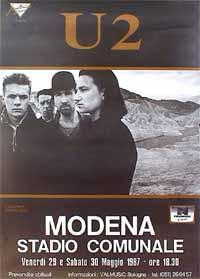
The Joshua Tree Tour was a concert tour by Irish rock band U2. Staged in support of their 1987 album The Joshua Tree , it comprised 109 shows over three legs, spanning from April to December that year. The first and third legs visited North America, while the second leg toured Europe. While it reflects previous tours in minimal production, the Joshua Tree Tour was the first to involve larger venues in arenas and stadiums as a result of the album's breakthrough. Like the themes of its parent album, the tour has the group exploring social and political concerns, along with American roots and mythology, collaborating with American guest musicians and opening acts such as B. B. King. U2 also recorded new material; these songs and the band's experiences on tour were depicted on the 1988 album and documentary film Rattle and Hum and on the 2007 video and live album Live from Paris . Territories that this tour missed would later be covered by Rattle and Hum 's Lovetown Tour.

The HIS tory World Tour was the third and final worldwide solo concert tour by American singer and recording artist Michael Jackson, covering Europe, Asia, Oceania, Africa and North America. The tour included a total of 82 concerts spanning the globe with stops in 57 cities, 35 countries on 5 continents. The tour promoted Jackson's 1995 album HIStory: Past, Present and Future, Book I . The second leg also promoted the remix album Blood on the Dance Floor: HIStory in the Mix . The tour was attended by over 4.5 million fans.

The Bridges to Babylon Tour was a worldwide concert tour by The Rolling Stones. Staged in support of their album Bridges to Babylon , the tour visited stadiums from 1997 to 1998. It grossed over $274 million, becoming the second-highest-grossing tour at that time, behind their own Voodoo Lounge Tour of 1994–1995. The Bridges to Babylon Tour was followed by 1999's No Security Tour.
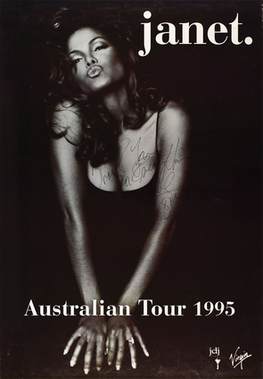
Janet World Tour was the second concert tour by American recording artist Janet Jackson. It was launched in support of her fifth studio album Janet (1993). It began in November 1993 and continued through April 1995. Concerts were held in North America, Europe, Asia, and Australia. It is believed shows were performed in South America. However, there are not exact details and most information is unknown.
The Madly in Anger with the World Tour was a concert tour by American heavy metal band Metallica. It supported the band's eighth studio album, St. Anger . The tour lasted over 12 months, beginning in the fall of 2003, performing over 100 shows.

A New Day... was the first concert residency performed by Canadian singer Celine Dion in The Colosseum at Caesars Palace in Las Vegas, Nevada, United States. It was created and directed by Franco Dragone to support her seventh English-language and eighteenth studio album A New Day Has Come (2002). The show premiered on 25 March 2003 and ended on 15 December 2007.

Break Every Rule World Tour is the sixth concert tour by singer Tina Turner. The tour supported her sixth solo album Break Every Rule (1986). It was sponsored by Pepsi-Cola and broke box office records in 13 different countries: United Kingdom, Germany, Netherlands, Switzerland, Belgium, Norway, Sweden, Spain, Italy, Austria, France, Ireland and Denmark. It was the third highest-grossing tour by a female artist in North America in 1987 and the highest-grossing female tour of the 1980s with a total of $11.3 million . Her show in Rio de Janeiro remains the largest paying concert audience by a female artist with 180,000 spectators.
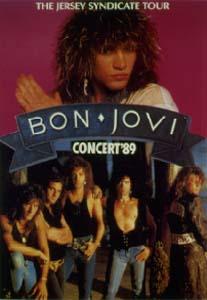
The Jersey Syndicate Tour was the fourth concert tour by American band Bon Jovi, that ran from 1988 to 1990. The massive, highly successful world tour was put on in support of the band's fourth studio album New Jersey (1988).

The Faith Tour was the first solo concert tour by English singer-songwriter George Michael, launched in support of his multi-million selling debut solo album Faith . The tour spanned nine months between February and October 1988 with three final shows in the summer of 1989 comprising 109 shows across sixteen countries. It was choreographed by Paula Abdul.
The Triumph Tour was a concert tour by the Jacksons, covering the United States and Canada from July 8 to September 26, 1981. The tour grossed a total of $5.5 million, setting a record breaking four sold out concerts in Inglewood, California, just southwest of Los Angeles.
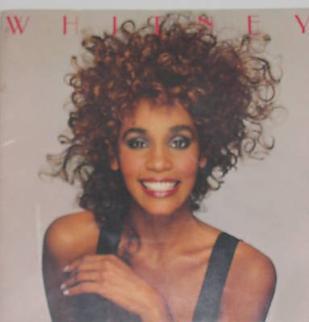
The Moment of Truth World Tour was the second worldwide tour by American recording artist Whitney Houston and supported her multi-platinum hit album Whitney . The trek started on July 4, 1987 in North America and continued overseas during 1988 in Europe, Asia and Australia.
The Rapture Tour was the first headlining concert tour by American recording artist Anita Baker in support of her second studio album Rapture (1986). The tour started in mid-March 1986, visiting several cities throughout North America and Europe. In 1987, Baker kicked off a North America second leg trek, which included seven dates in Los Angeles at the Beverly Theatre in January, including two and three-night dates in Merrillville, Indiana, New York City and Miami, Florida. The outing included four sold-out shows scheduled in Washington, D.C., and three consecutive dates for the second visit in Merrillville, Indiana.

The Magic Summer Tour was the second major concert tour by American boy band, the New Kids on the Block. The tour supported their fourth studio album, Step by Step (1990) and their first compilation album, No More Games: The Remix Album (1990).

The Recycler Tour was a concert tour by American rock band ZZ Top. Presented by Beaver Productions and sponsored by Miller Lite, the tour took place in North America and Europe. The set list featured material from the band's previous seven studio albums. Venues were mostly arenas.
The Slippery When Wet Tour , by American hard rock band Bon Jovi, ran from 1986 to 1987. It supported the band's multi-platinum 1986 album Slippery When Wet and was their first major worldwide tour, visiting places such as Australia and Canada for the first time.
Michael Jackson: The Immortal World Tour was the first of two theatrical productions by Cirque du Soleil to combine the music of Michael Jackson with Cirque du Soleil's signature acrobatic performance style. The show was written and directed by Jamie King and produced in partnership with the Estate of Michael Jackson. The arena show—which is very similar to a rock concert—began its tour on October 2, 2011, in Montreal. After touring North America for one year, Immortal continued through Europe, Asia, Australia, New Zealand and the Middle East before returning to North America in February 2014 for a total of 501 shows from 141 cities. It is the most financially successful Cirque production and highest grossing tribute show in history.
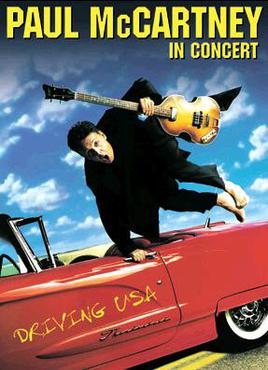
The Driving World Tour was a concert tour by English musician Paul McCartney. It marked his first tour of the 21st century and of any kind since 1993's New World Tour. For the first time in nearly a decade, McCartney returned to the road following the death of first wife, Linda McCartney, the death of George Harrison, and 9/11. This was in promotion of his 2001 album Driving Rain . Paul "Wix" Wickens returned on keyboards and is credited as Musical Director. New to the fold were Americans Rusty Anderson, Brian Ray, and Abe Laboriel Jr. Paul McCartney's then-fiancée Heather Mills accompanied him on the tour and was in the audience for every American performance.

The Back in Black Tour was a concert tour by the Australian hard rock band AC/DC in support of their seventh studio album Back in Black , which was released on 25 July 1980.
The Heat is a co-headlining concert tour by American recording artists Anita Baker and Luther Vandross. The tour primarily played over 50 shows in the United States during the fall and winter of 1988. Shows in New York City, Los Angeles and Rosemont were instant sellouts.
The Power Windows Tour was a concert tour by Canadian rock band Rush, in support of the band's eleventh studio album Power Windows .
- 1 2 3 4 5 Campbell 1993, p. 236.
- ↑ Halstead, Craig; Cadman, Chris (July 2003). Michael Jackson The Solo Years . England: New Generation Publishing. p. 85. ISBN 978-0755200917 .
- ↑ "Why Michael Jackson Stopped Performing at His Peak? | the detail" . YouTube .
- ↑ "Jackson set for his first solo world tour" . Desert Dispatch . June 30, 1987. p. 9 . Retrieved February 10, 2023 – via Newspapers.com.
- ↑ "Michael Jackson sets new concert tour dates" . The Daily Advertiser . July 5, 1987. p. 28 . Retrieved February 12, 2023 – via Newspapers.com.
- ↑ Jones, Terril (September 20, 1987). "Jackson tour gives boost to Pepsi sales in Japan" . Daily Record . p. D14 . Retrieved February 10, 2023 – via Newspapers.com.
- 1 2 3 4 5 6 7 Currell, Christopher (May 26, 2015). "The Event Horizon – "Synclavier, Music and Michael Jackson" – Part 4". Headphone Guru. {{ cite web }} : Missing or empty | url= ( help )
- ↑ Kaplan, Lisa Faye (July 9, 1987). "Brando's son is behind the 'Bad' concerts" . Mount Vernon Argus . p. C1 . Retrieved February 12, 2023 – via Newspapers.com.
- 1 2 3 Darter, Sibyl (March 1989). "Rory Kaplan" (PDF) . After Touch . Vol. 5, no. 3. pp. 10–11 . Retrieved February 18, 2023 .
- 1 2 3 4 5 Currell, Christopher (May 26, 2015). "The Event Horizon – "Synclavier, Music and Michael Jackson" – Part 3". Headphone Guru. {{ cite web }} : Missing or empty | url= ( help )
- ↑ "Michael Jackson's new tour to start in Japan" . Manila Standard . July 2, 1987 . Retrieved September 29, 2010 .
- 1 2 Campbell 1993, p. 208.
- 1 2 "Michael Jackson arrives in Tokyo" . Asbury Park Press . September 11, 1987. p. C8 . Retrieved February 12, 2023 – via Newspapers.com.
- ↑ "Michael Jackson craze hits Japan" . New Straits Times . September 12, 1987 . Retrieved September 29, 2010 . [ permanent dead link ]
- ↑ "Jackson gets key" . Courier-Post . September 19, 1987. p. 8C . Retrieved February 12, 2023 – via Newspapers.com.
- ↑ "Michael Jackson 'horrified' by killing of Japanese boy" . The Leader-Post . September 28, 1987. p. C6 . Retrieved February 12, 2023 – via Newspapers.com.
- ↑ Richard Harrington (January 12, 1988). "Jackson to Make First Solo U.S. Tour" . The Washington Post . Archived from the original on July 25, 2013 . Retrieved July 5, 2017 .
- ↑ "Michael Jackson ends tour of Japan" . The Daily Item . October 20, 1987. p. 14 . Retrieved February 12, 2023 – via Newspapers.com.
- ↑ "Jackson in Hong Kong" . Victoria Advocate . October 21, 1987. p. 7D . Retrieved February 12, 2023 – via Newspapers.com.
- ↑ "Michael Jackson cancels holiday" . Red Deer Advocate . October 26, 1987. p. 4B . Retrieved February 12, 2023 – via Newspapers.com.
- ↑ "Briefly: Michael Jackson cancels tour" . Detroit Free Press . October 30, 1987. p. 14D . Retrieved February 12, 2023 – via Newspapers.com.
- ↑ "Some rock, some roll in show biz" . Sydney Morning Herald . November 14, 1987 . Retrieved February 12, 2023 – via Newspapers.com.
- ↑ Snider, Eric (January 15, 1988). " 'Bad' tour: Pensacola is southern limit" . St. Petersburg Times . Archived from the original on February 9, 2011 . Retrieved December 11, 2009 .
- ↑ "Jackson entertains kids" . The Dispatch . Lexington, North Carolina. February 20, 1988. p. 2 . Retrieved June 28, 2014 .
- ↑ Campbell 1993, p. 212.
- ↑ Campbell 1993, p. 213.
- ↑ Decurtis, Anthony (February 10, 1988). "Michael Jackson plans U.S., European tours" . Anchorage Daily News . Retrieved September 30, 2010 . [ permanent dead link ]
- ↑ Campbell 1993, p. 189.
- ↑ "Michael Jackson" . Gettysburg Times . May 25, 1988 . Retrieved September 30, 2010 .
- ↑ "130 fans faint at Jackson concert" . The Telegraph . June 4, 1988 . Retrieved September 30, 2010 .
- ↑ "Michael Jackson Oona Chaplin" . Gettysburg Times . June 20, 1988 . Retrieved September 30, 2010 .
- ↑ Boston, William (August 5, 2009). "The Stasi File on Michael Jackson" . Time . ISSN 0040-781X . Retrieved March 26, 2023 .
- 1 2 Campbell 1993, p. 216.
- 1 2 3 Halstead 2003, p. 80.
- ↑ Campbell 1993, p. 217.
- ↑ "Stay up tonight to catch Michael Jackson on tour" . Boca Raton News . July 30, 1988 . Retrieved October 2, 2010 . [ permanent dead link ]
- ↑ "1,550 injured at Jackson concert" . Pittsburgh Post-Gazette . September 12, 1988 . Retrieved September 30, 2010 . [ permanent dead link ]
- ↑ "Michael Jackson Donates $125,000 to Motown Museum" . The Argus-Press . October 24, 1988 . Retrieved October 2, 2010 .
- ↑ "Michael Jackson | BAD Tour LIVE in Los Angeles 1989 (Soundboard Audio) FULL SHOW" . YouTube .
- ↑ "Jackson greets 4 millionth fan" . Anchorage Daily News . December 12, 1988 . Retrieved September 30, 2010 . [ permanent dead link ]
- ↑ "Michael's Last Tour" . Ebony . Johnson Publishing Company. April 1989. pp. 142–153 . Retrieved October 2, 2010 .
- ↑ Halstead 2003, p. 85.
- ↑ "25th Anniversary of Michael Jackson's Landmark Album Bad Celebrated With September 18 Release Of New Bad 25 Packages" . Sony Music . michaeljackson.com . Retrieved May 31, 2012 .
- ↑ John Peel (June 28, 2009). "John Peel on Michael Jackson's 'Bad' show at Wembley | Music | The Observer" . London: Guardian . Retrieved December 28, 2012 .
- ↑ "Taylor Dayne – AskMen" . Uk.askmen.com. March 7, 1962. Archived from the original on August 15, 2016 . Retrieved December 28, 2012 .
- ↑ Halstead 2003, p. 79.
- ↑ "Michael Jackson's music had impact around the globe" . Reuters . July 3, 2009 – via www.reuters.com.
- ↑ "Billboard Boxscore" (PDF) . Billboard . Vol. 100, no. 11. March 12, 1988. p. 22. ISSN 0006-2510 .
- ↑ "Billboard Boxscore" (PDF) . Billboard . Vol. 100, no. 12. March 19, 1988. p. 37. ISSN 0006-2510 .
- ↑ "Billboard Boxscore" (PDF) . Billboard . Vol. 100, no. 15. April 9, 1988. p. 46. ISSN 0006-2510 .
- ↑ "Billboard Boxscore" (PDF) . Billboard . Vol. 100, no. 17. April 23, 1988. p. 23. ISSN 0006-2510 .
- ↑ "Billboard Boxscore" (PDF) . Billboard . Vol. 100, no. 22. May 28, 1988. p. 44. ISSN 0006-2510 .
- ↑ "Billboard Boxscore" (PDF) . Billboard . Vol. 100, no. 42. October 15, 1988. p. 24. ISSN 0006-2510 .
- ↑ "Billboard Boxscore" (PDF) . Billboard . Vol. 100, no. 43. October 22, 1988. p. 46. ISSN 0006-2510 .
- ↑ "Billboard Boxscore" (PDF) . Billboard . Vol. 100, no. 45. November 5, 1988. p. 46. ISSN 0006-2510 .
- ↑ "Billboard Boxscore" (PDF) . Billboard . Vol. 101, no. 6. February 11, 1989. p. 32. ISSN 0006-2510 .
- ↑ "Michael Jackson Silent on Ending His Tours" . The New York Times . December 27, 1988.
- ↑ Billboard 1987 worldradiohistory.com p.64
- ↑ The Vindicator . The Vindicator.
- ↑ "Michael Jackson coming back home to Indiana" . Times-Union . Los Angeles. Associated Press. January 13, 1988 . Retrieved February 17, 2024 – via Google Newspaper Archive.
- ↑ https://i.ebayimg.com/images/g/R1sAAOSwBttkHWZz/s-l1600.jpg
- ↑ Barnes, Brooks (June 26, 2009). "Michael Jackson: A thrilling pop icon, a troubled soul" . Seattle Times . Retrieved August 30, 2018 . He was scheduled to appear at the Tacoma Dome in October 1988—selling more than 70,000 tickets over three nights—but canceled the day before the opening show, due to the flu.
- ↑ Reuters (July 2, 1987). "Michael Jackson's New Tour Starts in Japan" . Manila Standard . Vol. 1, no. 147. p. 14 . Retrieved February 14, 2023 .
- ↑ Saulnier, Jason (July 23, 2008). "Jennifer Batten Interview" . Music Legends . Retrieved July 3, 2013 .
- Campbell, Lisa D. (1993). Michael Jackson: The King of Pop (first ed.). Branden Books. ISBN 978-0-8283-1957-7 .
- Halstead, Craig (2003). Michael Jackson The Solo Years (first ed.). Authors On Line, Ltd. ISBN 978-0-7552-0091-7 .
- Thriller – Live
- Michael Forever – The Tribute Concert
- Michael Jackson: The Immortal World Tour
- Motown: The Musical
- Michael Jackson: One
- MJ the Musical
- Memorial service
- Philanthropy
- Monuments, memorials and namesakes
- Michael Jackson Video Vanguard Award
- Mesoparapylocheles michaeljacksoni
- Thrill the World
- Thriller viral video
- World Vitiligo Day
- Sonic the Hedgehog
- Impersonators
- Michael Jackson fandom
- Michael Jackson: On the Wall
- Heal the World Foundation
- Jackson family
- The Jackson 5
- The Jackson 5 discography
- The Jackson 5ive
- Health and appearance
- Personal relationships
- Cover versions
- Estate of Michael Jackson
- Thriller jacket
- Fulham F.C. statue
- Michael Jackson: The Magic and the Madness
- Michael Jackson and Bubbles
- MJ Gallery at Ponte 16
- Behind the Mask
- " We Had Him "
- You Are Not Alone
- Michael Jackson, Inc.
- Hayvenhurst
- Neverland Ranch
- Thriller Villa
- Northern Songs
- Sony/ATV Music Publishing
- Peter Pan syndrome
- Trial of Michael Jackson
- FBI files on Michael Jackson
- Mister Lonely
- We Are the World
- Mind Is the Magic: Anthem for the Las Vegas Show
- Never Can Say Goodbye: The Music of Michael Jackson
- Rava on the Dance Floor
- Unity: The Latin Tribute to Michael Jackson
- " Better on the Other Side "
- Return of the Moonwalker
- Sheikh Jackson
- The Last Days of Michael Jackson
- Manage Account
What It’s Like to Be Part of Bad Bunny’s Inclusive Dance Team: Meet the Dancers
Meet all 10 dancers that joined Bad Bunny on his "El Ultimo Tour del Mundo" U.S. trek.
By Jessica Roiz
Jessica Roiz
Assistant Editor, Latin
- Share this article on Facebook
- Share this article on Twitter
- Share this article on Flipboard
- Share this article on Pinit
- + additional share options added
- Share this article on Reddit
- Share this article on Linkedin
- Share this article on Whatsapp
- Share this article on Email
- Print this article
- Share this article on Comment
- Share this article on Tumblr

Bad Bunny officially culminated his El Último Tour del Mundo on April 3 at the FTX Arena in Miami. Backstage, he popped bottles with his entire team — not only to celebrate the ending of two successful months on the road, but also a Grammy win, with his accompanying El Último Tour del Mundo taking home best música urbana album at the April 3 ceremonies.
See latest videos, charts and news
Now, while fans patiently wait for the Puerto Rican artist to reveal information about his next studio album — which he promised he’d share after the tour — his dancers are enjoying their newfound fame.
Inspo & Perreo: 4 Motivational Speeches Bad Bunny Gave at 'El Ultimo Tour Del Mundo'
“Honestly, it was an emotional night because the tour had ended,” recalls Karina Ortiz, Bad Bunny’s lead choreographer. “But more importantly, it was about the respect we had on this tour, and the different stereotypes [we’re breaking]. There was no label, and being able to do that was an achievement of mine as a choreographer.”
Ortiz was one of the 10 Puerto Rican dancers who joined Bunny on his U.S. trek, which kicked off in early February. Notably, the group was particularly diverse, with artists between the ages of 19 and 30, and of all sizes and skin colors.
Trending on Billboard
“Bad Bunny was the one who asked me to make sure the team was inclusive,” Ortiz tells Billboard . “Normally, the choreographer is the one who picks the dancers — but this time, we filmed the auditions, sent them to Bad Bunny’s team, and he picked the dancers.”
Auditions to join the “Bad Bunny Dancers,” as they’re called, began as early as October of 2021. Out of 80 dancers, 16 were picked to dance at his two-day PFKNR shows in Decemeber — and out of those, 10 joined him on the El Ultimo Tour del Mundo trek: Antonio Gonzalez, Brian Gabriel Rivera, Carlos J. Agosto, Irasema Ivis Santana, Jose Ricardo Cora, Karianisse Camillie, Karina Ortiz, Kiara Yamilette Rodriguez Saldivar, Melanie Avilés, and Nigel O’Brian Hernandez Torres.
On TikTok, the group discovered an entire fan base after igniting the “La Zona” dance challenge to kick off the tour on Jan. 31. “It’s one of Bad’s best songs but I felt that it was so underrated,” Ortiz expresses, saying that they didn’t have the opportunity to dance to the song on PFKNR. “We didn’t think the dance trend would go viral.”
@badbunny pensando si subir el mio… 🤔 ya estamos ready PAL TOUR DEL ÚLTIMO TOUR!! ♬ La Zona – Bad Bunny
Currently, there are more than 710,000 video creations have been posted on the app to the song, and collectively, the dancers have over 1.6 million TikTok followers.
But beyond the social following and the tour dates, forming part of Bad Bunny’s team represents hope, inclusion, and change for the dancers — best represented during the “Yo Perreo Sola” set, where they all rock the same red leather outfit.
“Again, this outfit was Bad Bunny’s idea,” she notes. “I loved this dance, but it was more about the message we were sending with this outfit. Gender doesn’t matter. We’re all the same at the end of the day.”
Below, learn more about the dancers, who will also join Bad on his “ World’s Hottest Tour ” in the summer:

MEET THE BAD BUNNY DANCERS
Antonio “tony” gonzalez, 23, from guayama .
View this post on Instagram A post shared by 𝗔𝗻𝘁𝗼𝗻𝗶𝗼 𝗚𝗼𝗻𝘇𝗮𝗹𝗲𝘇 👁 (@thonygnzlz_)
What does being part of Bad Bunny’s team mean to you? Growth, due to everything I have learned, and the growth for everyone, due to the diversity of the people in the dance crew, and the stereotypes that we broke.
What was your favorite song to perform on El Ultimo Tour del Mundo? “Yo Perreo Sola” and “Safaera.”
What was your go-to tour outfit? The red outfit from “Yo Perreo Sola.” Not only because of how I felt in it, but because of the audience’s reaction.
What was your most memorable moment on the tour? In the last show in Miami’s FTX Arena Benito asked the audience to give us a round of applause and said that we were the best dancers he had ever seen. I swear that in those few seconds, everything changed in me.
Brian Gabriel Rivera, 23, from San Juan
View this post on Instagram A post shared by Brian Gabriel (@brivn.gabriel)
What does being part of Bad Bunny’s team mean to you? It is a dream come true to belong to this team in which stereotypes do not exist and [where you’re allowed] to express yourself as you know how to do it. One of my dreams has always been to be able to be myself on stage, and have the opportunity to inspire other people in the LGBTQ+ community. If I could achieve it, they can too — and thanks to Bad Bunny and his team, that dream has been achieved.
What was your favorite song to perform in El Ultimo Tour del Mundo? Choosing just one from a show that’s so varied is complicated, but my favorites were “La Difícil,” “Bichiyal,” and “Safaera.”
What was your go-to tour outfit? Without a doubt, my favorite outfit was the red leotard from “Yo Perreo Sola.”
What was your memorable moment on the tour? On the last night of the tour, we were all nostalgic, but happy that we met [our] goal after two months and playing 35 shows. At the end of that night’s show, Bad Bunny asked the audience for a round of applause for his dancers, and expressed how happy he was with our work. It feels great that an artist of that caliber can value and recognize your work in front of so many people.
Carlos “Solid” Agosto, 30, from Bayamon
View this post on Instagram A post shared by Carlos Agosto Rivera (@solid.pr)
What does being part of Bad Bunny’s team mean to you? It’s extraordinary. Being chubby and being able to work with the number one artist is more than an achievement — it’s like a dream come true.
What was your favorite song to perform in El Ultimo Tour del Mundo? “Safaera.” The energy is always high, the euphoria is incredible and the audience feels at the top.
What was your go-to tour outfit? The red one we wore during “Yo Perreo Sola.”
What was your most memorable moment on the tour? When Benito realized that I can do a handstand and walk on my hands. Seeing his astonished reaction was incredible.
Irasema “Senai” Ivis Santana, 22, from San Juan
View this post on Instagram A post shared by Irasema 🦂 (@senaii3)
What does being part of Bad Bunny’s team mean to you? To be part of an immense change within the artistic environment and outside as well. It is an honor to be part of that and of all the beauty that this work teaches you.
What was your favorite song to perform in El Ultimo Tour del Mundo? “Yo Perreo Sola,” “La Dificil,” and “La Zona”
What was your go-to tour outfit? I really like the outfit we wore during “La Dificil.”
What was your most memorable moment on the tour? For me, the most memorable moment of the entire tour was the last show.
Jose Ricardo Cora, 29, from Patillas
View this post on Instagram A post shared by Cora (@corajo5)
What does being part of Bad Bunny’s team mean to you? It represents everything that I am, how I dress, and how I see myself as a person and the LGBTQ+ community.
What was your favorite song to perform in El Ultimo Tour del Mundo? “La Dificil.”
What was your go-to tour outfit? Obviously, “Yo Perreo Sola.” Girl, that red latex had me feeling myself in all senses.
What was your most memorable moment on the tour? At one show, my in-ear monitors got damaged, so they gave me generic ones that kept falling off. The first time I used them they fell off while I was dancing to “Yo Perreo Sola,” and as soon as I heard the roar of the audience, it was the moment I said, “This is what I was born for.” Since then, I took off my headphones during that song to be able to enjoy the audience’s euphoria.
Karianisse Camillie, 19, from Ponce
View this post on Instagram A post shared by كميل (@k.camillie)
What does being part of Bad Bunny’s team mean to you? It signified perseverance. We all have something different that sets us apart but with the same goal.
What was your favorite song to perform in El Ultimo Tour del Mundo? “Safaera” and “La Zona.”
What was your go-to tour outfit? The classic red outfit from “Yo Perreo Sola.”
What was your most memorable moment on the tour? After the last show of the tour in Miami, because we were all happy with what we had just accomplished.
Karina Ortiz, 29, from Bayamon
View this post on Instagram A post shared by ᴋᴀʀɪɴᴀ ᴏʀᴛɪᴢ (@karinaortiz_pr)
What does being part of Bad Bunny’s team mean to you? Hope. This industry hasn’t been easy for me, but being here is proof of believing in myself and using this as an opportunity to open my own doors.
What was your favorite song to perform in El Ultimo Tour del Mundo? I really liked “La Noche de Anoche,” because visually it was another vibe, but “La Zona” is my favorite.
What was your go-to tour outfit? The red one from “Yo Perreo Sola.” Gender didn’t matter with that outfit. We’re all the same at the end of the day. It was more about the message.
What was your most memorable moment on the tour? Dancing in Los Angeles, because I lived there for five years chasing my dreams. Back then, I thought my goal was to dance with artists from the U.S. I had the opportunity to dance in one of Jennifer Lopez’s videos, but it didn’t make me feel accomplished. In that show, dancing with Bad Bunny, I realized that my dream was never outside of Puerto Rico.
Kiara Yamilette Rodriguez Saldivar, 22, from Humacao
View this post on Instagram A post shared by Kiara Y. Rodríguez Saldívar (@kiaritamatrix)
What does being part of Bad Bunny’s team mean to you? For me, it is the definition of persistence and evolution, since I have had the joy of being part of his team from the beginning, and I have seen great growth in all areas .
What was your favorite song to perform in El Ultimo Tour del Mundo? “Sorry Papi.”
What was your go-to tour outfit? The iconic outfit from “Yo Perreo Sola.”
What was your most memorable moment on the tour? Everything that we were able to share and connect with the public, especially seeing the audience doing all the choreographies with us.
Melanie Avilés, 24, from Mayaguez
View this post on Instagram A post shared by Melanie Avilés (@mel.aviles98)
What does being part of Bad Bunny’s team mean to you? Being part of the change and progress in breaking stereotypes in the industry. It shows other petite dancers to fight for their dreams, and it is an honor that my first experience as an official dancer has been with an artist and a work team that I admire so much.
What was your favorite song to perform in El Ultimo Tour del Mundo? “Yo Perreo Sola,” because of the reaction and the energy of the audience in each show.
What was your go-to tour outfit? Aside from the “Yo Perreo Sola” outfit for being so iconic, my favorite outfit was where we were all dressed differently, because it showed off our different styles.
What was your most memorable moment on the tour? There were two: One was to dance at the Amway Center because three years ago I saw Bad Bunny’s X100pre concert there, and manifested that I [would] one day dance with him. And the other moment was when Bad Bunny congratulated us and thanked us for our work in front of the entire audience at the end of “Yo Perreo Sola.”
Nigel O’Brian Hernandez Torres, 24 from Arecibo
View this post on Instagram A post shared by Nigel O'Brian (@nigelobrian_)
What does being part of Bad Bunny’s team mean to you? Union, hope, and consistency are the words that best describe what being in this great team means to me. Now, thanks to this team, no dancer is afraid of being who they are, or [having] to worry about stereotypes. What’s important here is talent and discipline above all. Now, there’s hope.
What was your favorite song to perform in El Ultimo Tour del Mundo? Since the rehearsals, “La Zona” always left me with a lot of adrenaline, and dancing it on stage raised met all my expectations. I also loved “Yo Perreo Sola” and “Safaera.”
What was your go-to tour outfit? The red leather outfit of “Yo Perreo Sola” is simply everything that is not “normal” for society in terms of masculinity, at least in my case. It breaks all ideology and manages to get me out of my comfort zone.
What was your most memorable moment on the tour? Without a doubt, to see how the public reacted in a positive and exciting way to our dancing, because they understand that we are also artists. Obviously, along the same lines, it was moving when Bad Bunny said we are the best dancers he has seen in his entire life. This is where you realize that you are not here to fill in a show, but that we are his show — and not all artists understand that.
Get weekly rundowns straight to your inbox
Want to know what everyone in the music business is talking about?
Get in the know on.
Billboard is a part of Penske Media Corporation. © 2024 Billboard Media, LLC. All Rights Reserved.
optional screen reader
Charts expand charts menu.
- Billboard Hot 100™
- Billboard 200™
- Hits Of The World™
- TikTok Billboard Top 50
- Song Breaker
- Year-End Charts
- Decade-End Charts
Music Expand music menu
- R&B/Hip-Hop
Videos Expand videos menu
Culture expand culture menu, media expand media menu, business expand business menu.
- Business News
- Record Labels
- View All Pro
Pro Tools Expand pro-tools menu
- Songwriters & Producers
- Artist Index
- Royalty Calculator
- Market Watch
- Industry Events Calendar
Billboard Español Expand billboard-espanol menu
- Cultura y Entretenimiento
Get Up Anthems by Tres Expand get-up-anthems-by-tres menu
Honda music expand honda-music menu.
- Skip to content
- Accessibility
- Buy Tickets
- Select A Location Below
- All Locations
- LV Las Vegas
- NASH Nashville
- PHILLY Philadelphia
Who's Bad: The Ultimate Michael Jackson Experience
Caleb hawley.
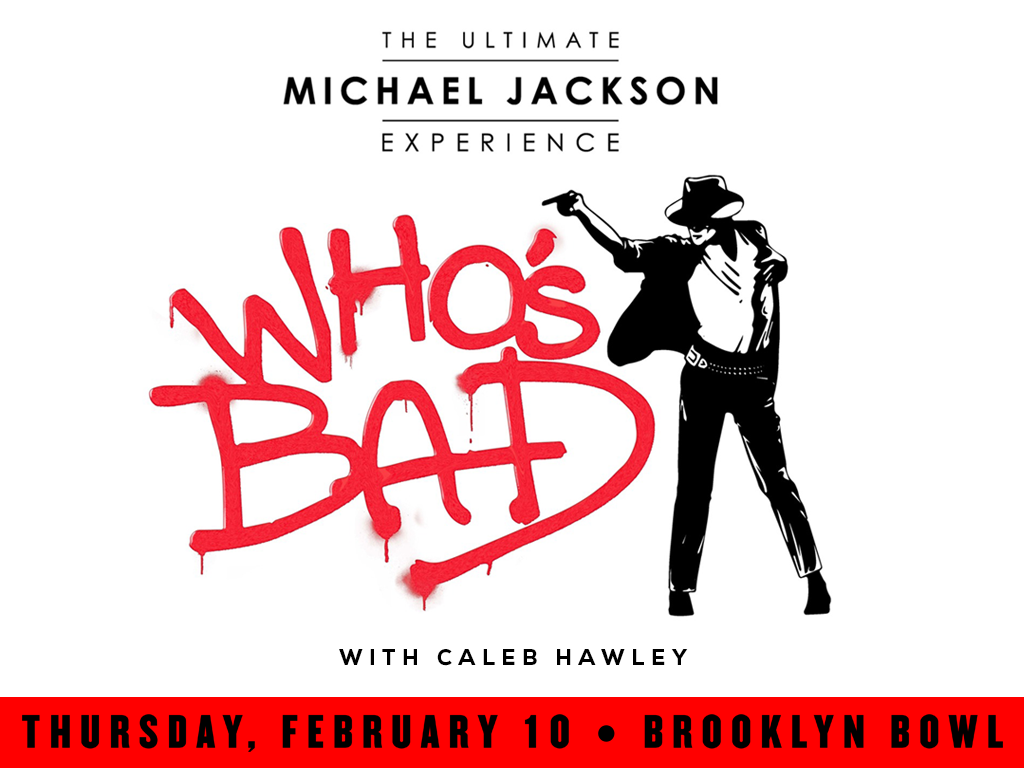
In accordance with the combined New York State and New York City “Key to NYC” vaccination mandates, Brooklyn Bowl has updated its COVID-19 Policy:
All guests must show proof of FULL VACCINATION with a matching photo ID.
Per the CDC and New York State FULL VACCINATION means two weeks past your second dose of Pfizer or Moderna, your first dose of Johnson & Johnson or a full course of vaccines authorized by WHO (if vaccinated outside of the U.S.).
Accepted proof of vaccination:
- Excelsior Pass
- NYC COVID Safe App: Android | iOS
- CDC Vaccination Card (or photo)
- Physical NYC Vaccination Record
- Official immunization record from outside NYC or the U.S ( see full requirements here )
Any guests, including ticket holders, unable to provide adequate proof of vaccination will not be granted entry into the venue.
MASKS Guests are required to wear masks except while eating or drinking. All Brooklyn Bowl staff are fully vaccinated and must wear masks while inside the venue.
Artist Info
Who's bad the ultimate michael jackson tribute.
- Official Website
There was a time when Caleb hated being mistaken as his mother when answering the land-line, but it worked out for him in the end, setting him apart with his high, androgynous vocals. Hawley’s music is elevated by stellar, out-of-the-box live performances (he’s played over a thousand), backed by a slew of reviews noting his onstage charisma. He forms authentic connections with an air of openness, soulful singalongs and untethered guitar work drawing comparisons from Prince to Robin Williams.
He has 5 full length albums out to date, most which were written & produced in his 5x10 storage-unit-turned-studio, where he works alongside a black market DVD burning entrepreneur named Fred.
Just Announced
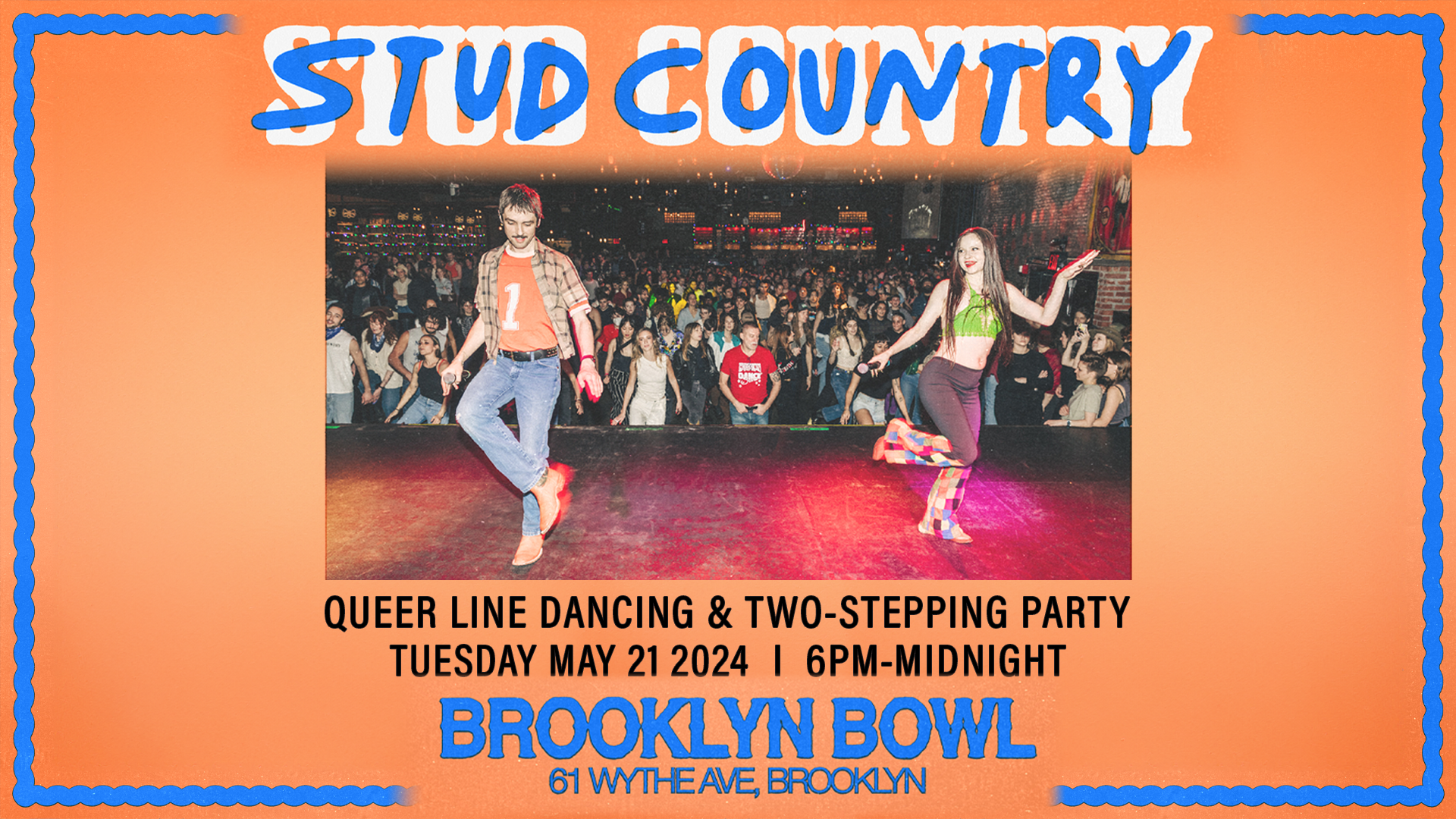
Stud Country: Queer Line Dancing & Two Stepping
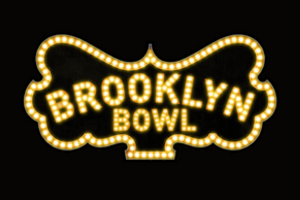
Closed for a Private Event
Brooklyn bowl will be closed this evening.
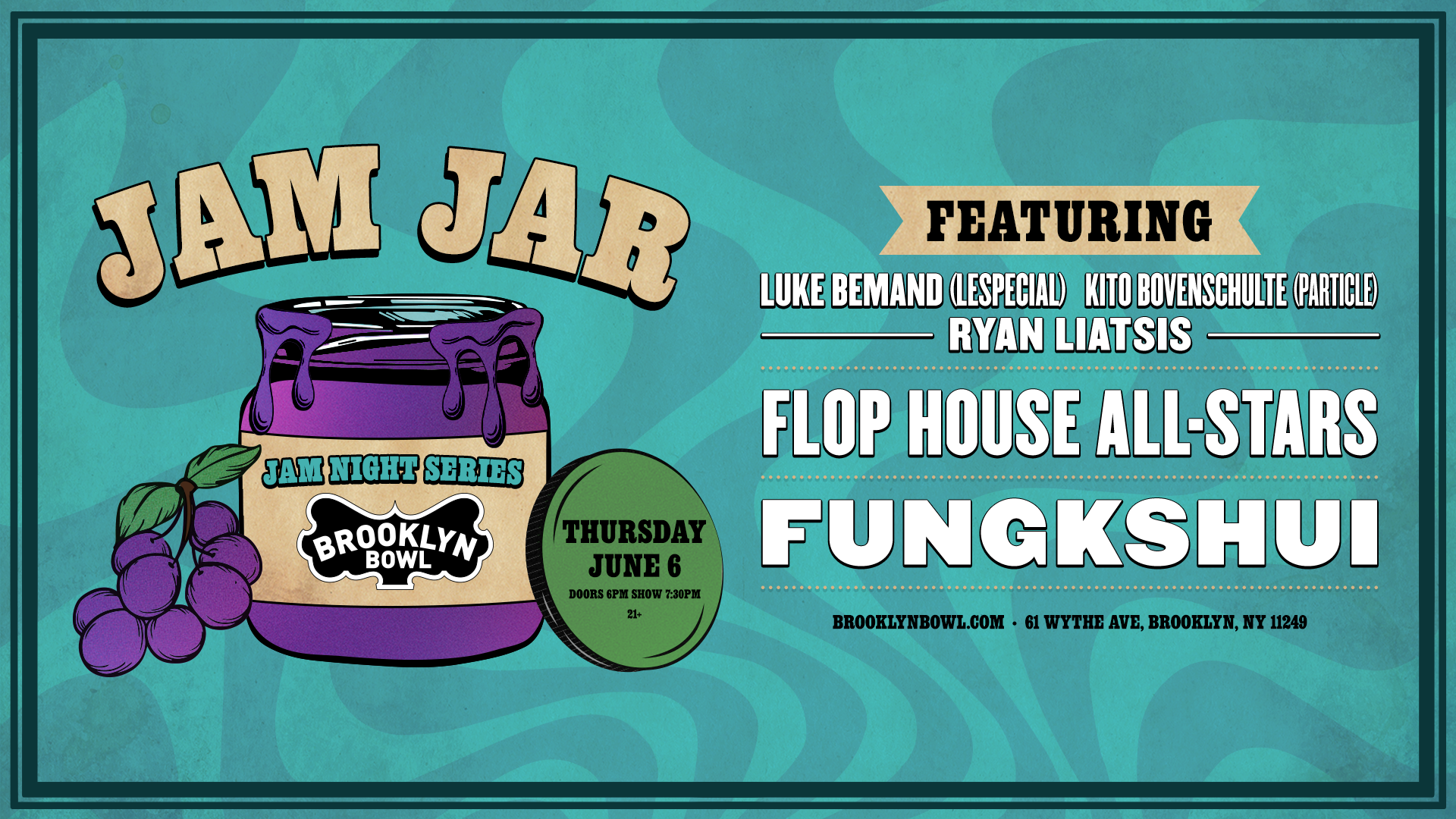
Luke Bemand (lespecial) / Kito Bovenschulte (Particle) / Ryan Liatsis
+ flop house all-stars + fungkshui.
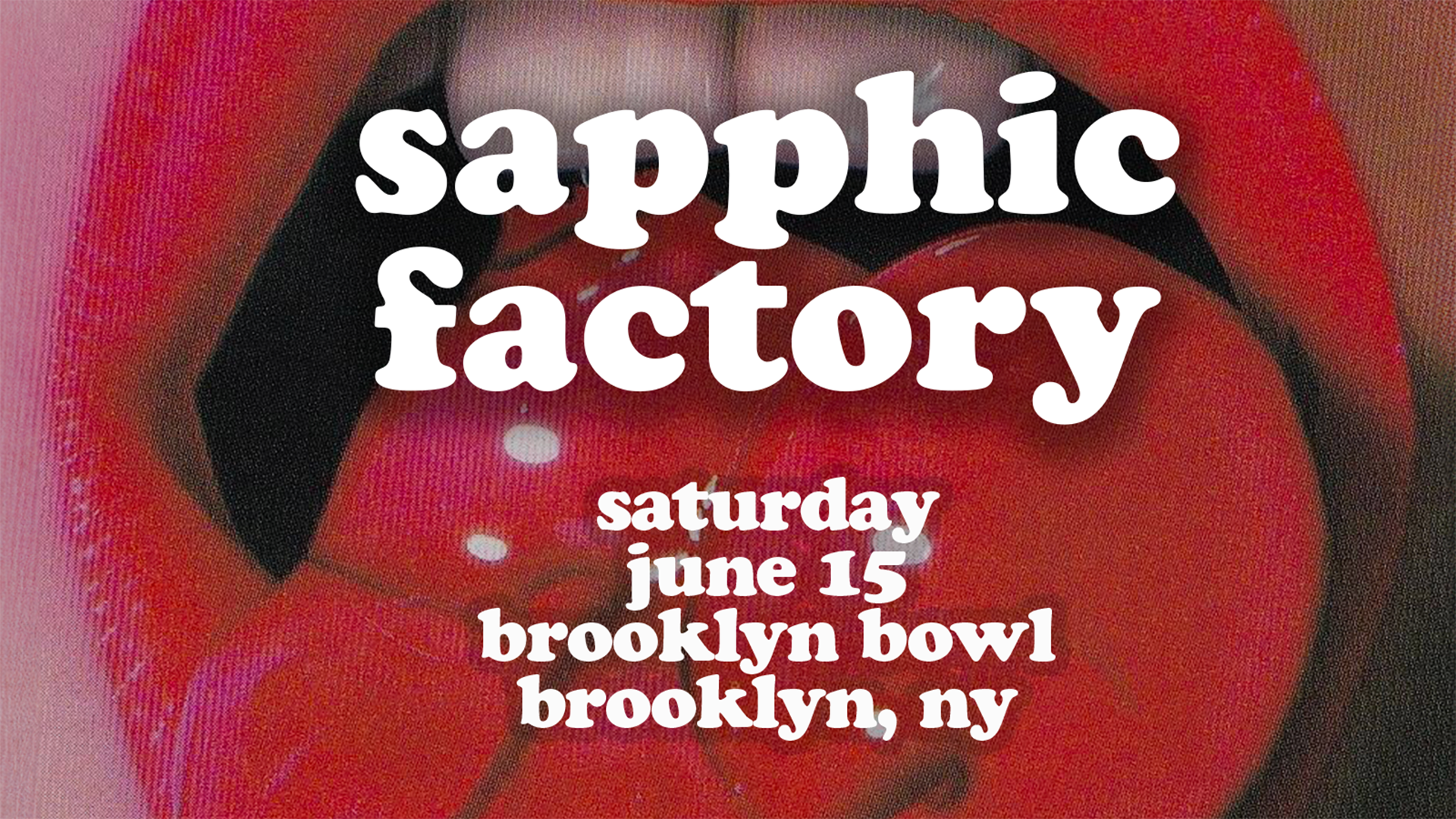
sapphic factory: queer joy party
A modern queer joy dance party.
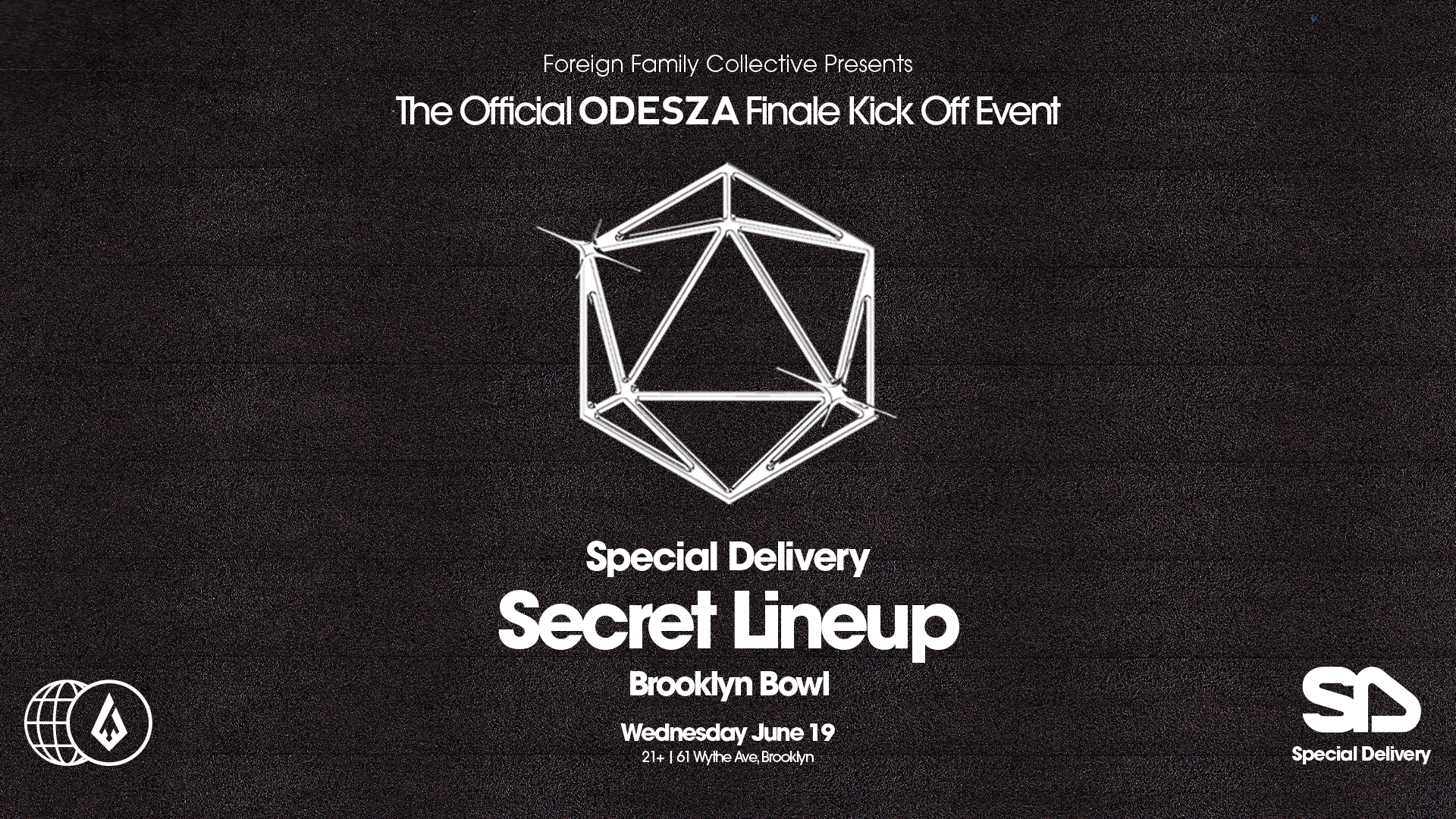
Special Delivery: Official ODESZA Finale Kickoff Event
Featuring tba foreign family collective artists, curated by odesza.
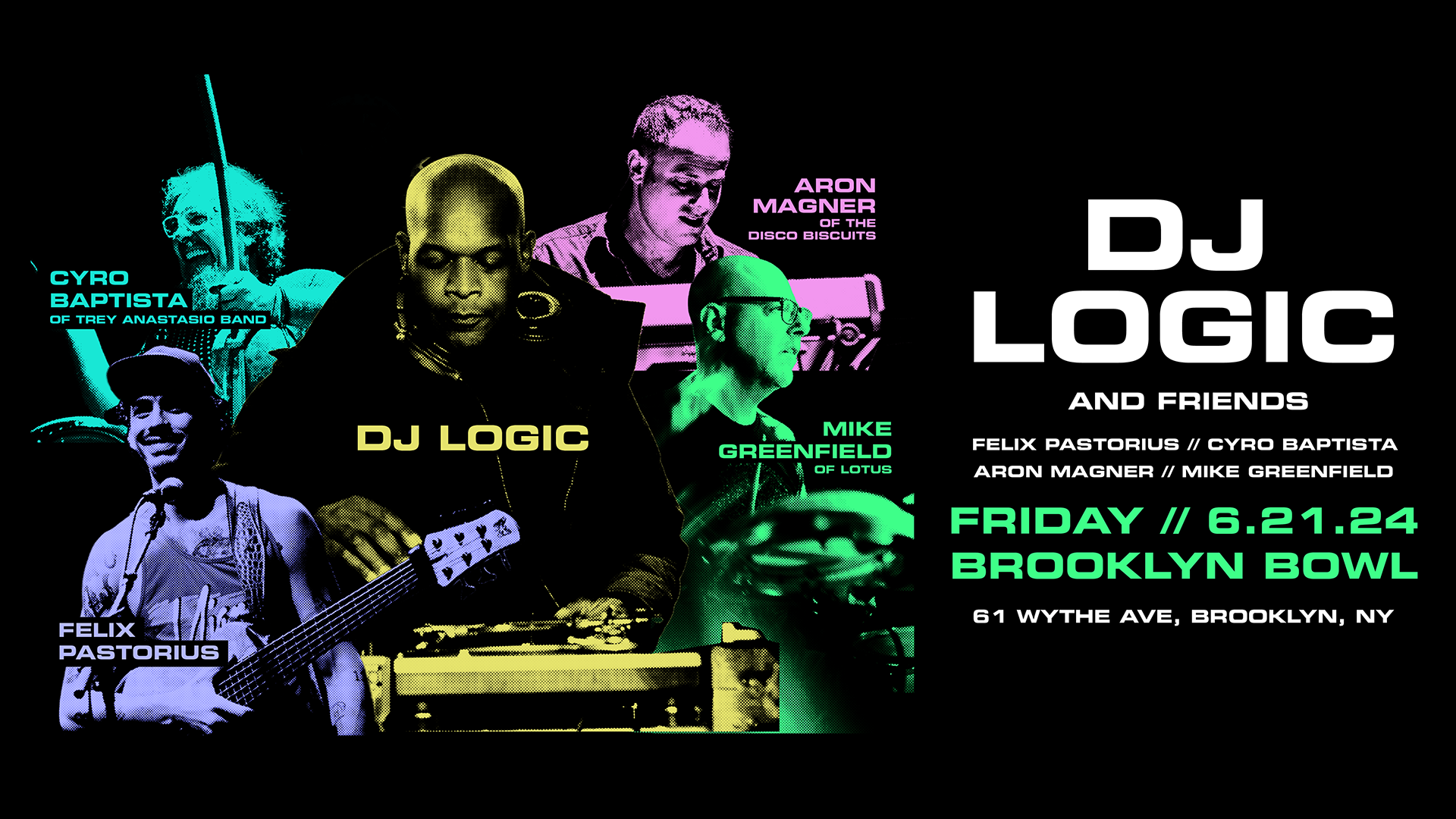
DJ Logic & Friends
Feat. felix pastorius cyro baptista (trey anastasio band), aron magner (disco biscuits), mike greenfield (lotus).
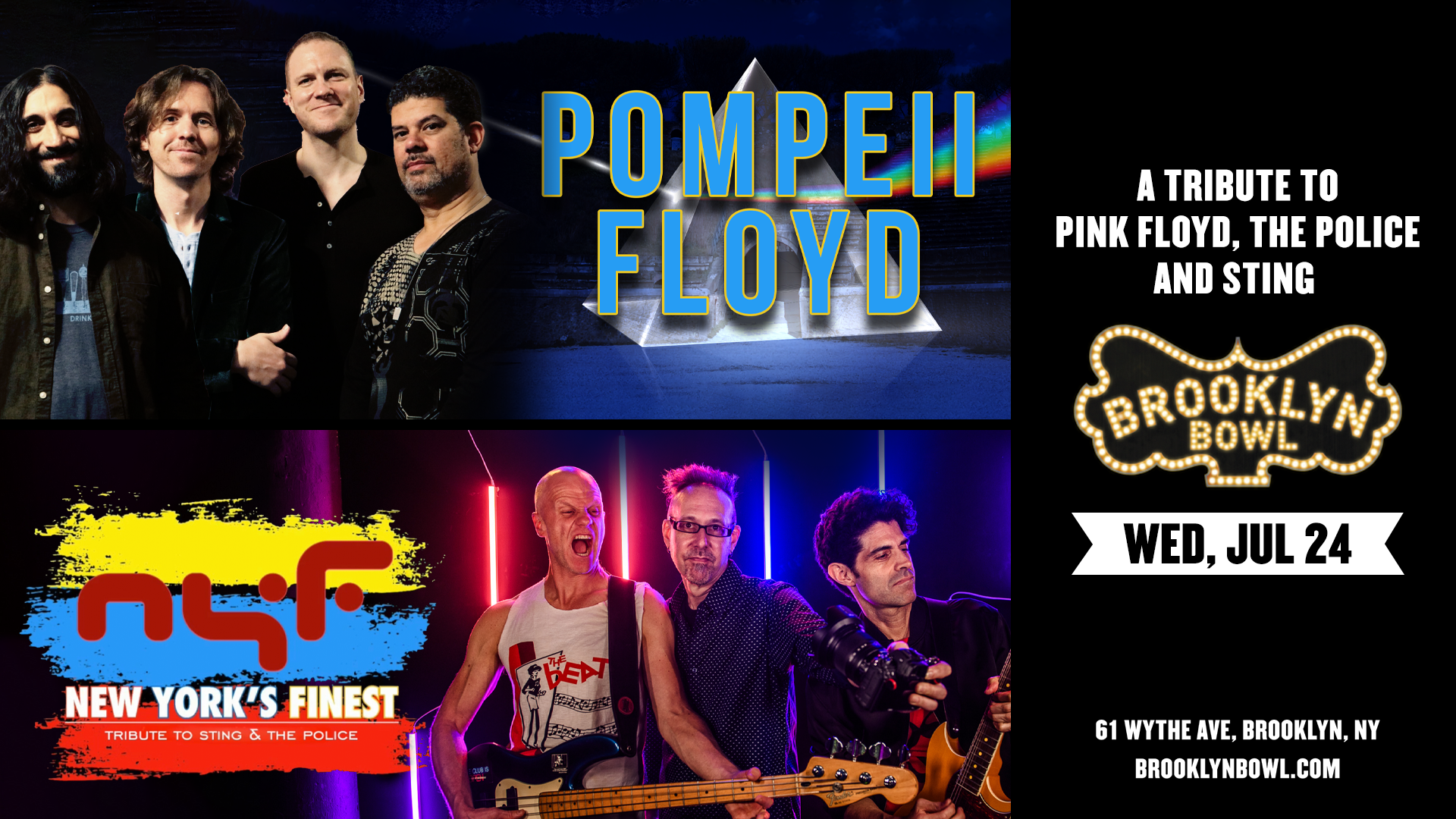
Pompeii Floyd + New York's Finest
A tribute to pink floyd, the police, and sting.
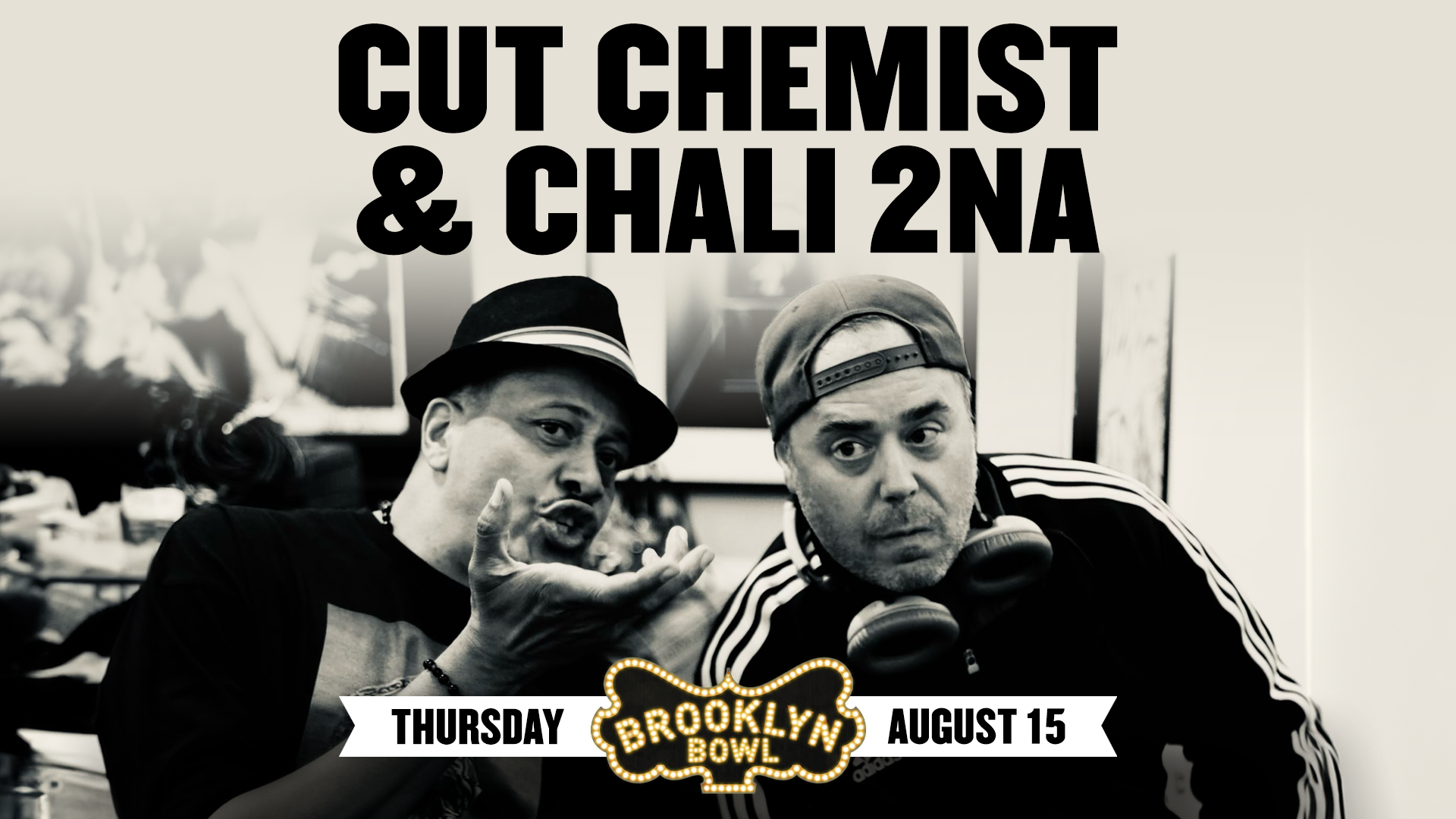
Cut Chemist + Chali 2na
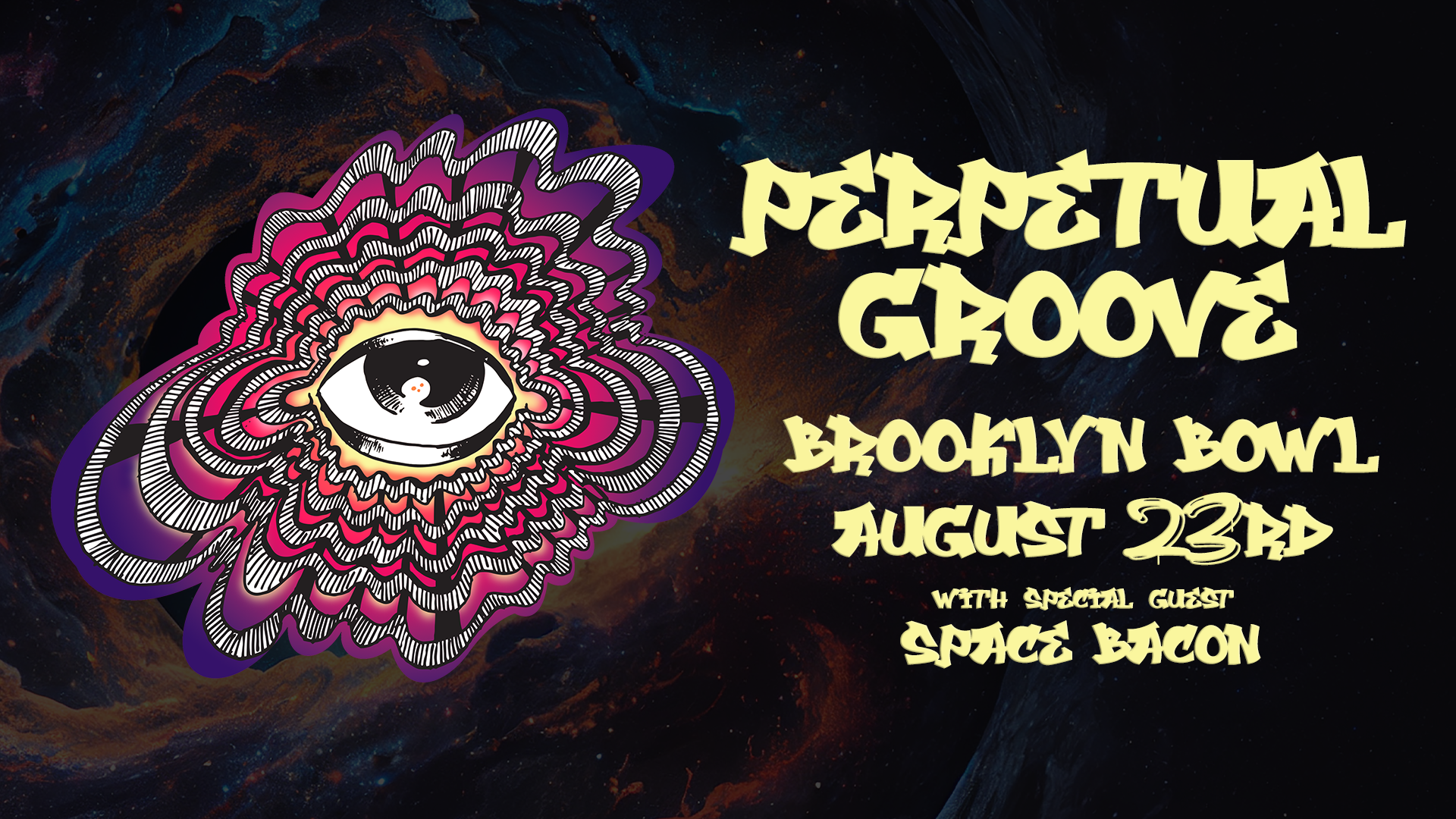
Perpetual Groove w/ Special Guest Space Bacon
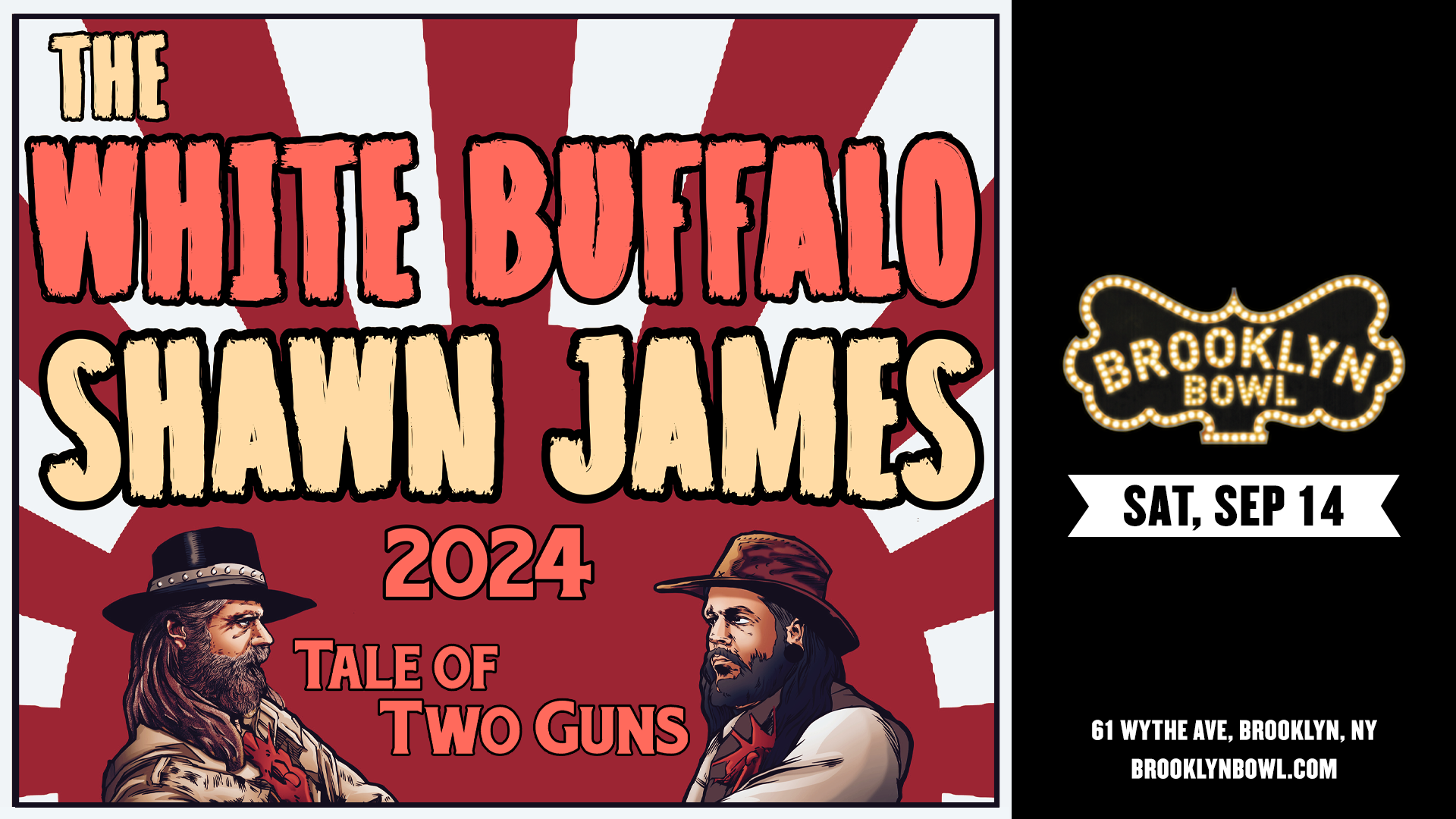
The White Buffalo + Shawn James
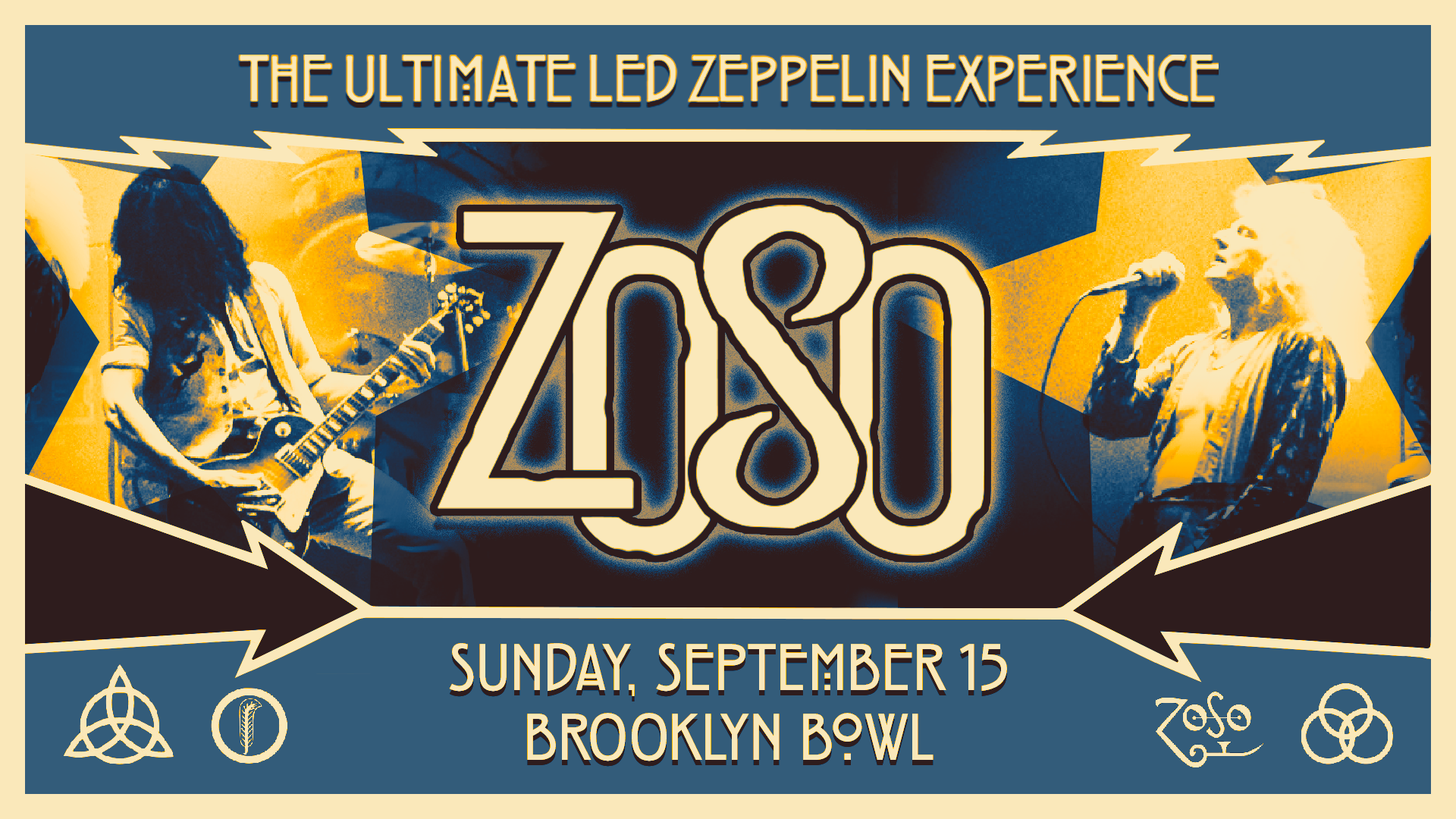
Zoso The Ultimate Led Zeppelin Experience
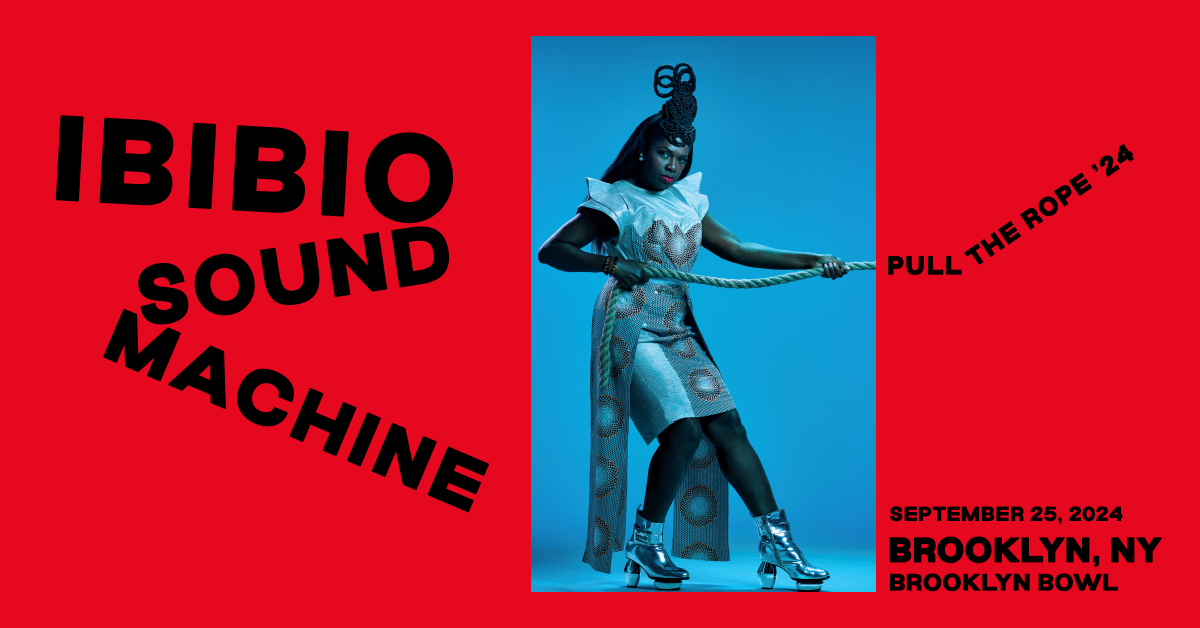
Ibibio Sound Machine
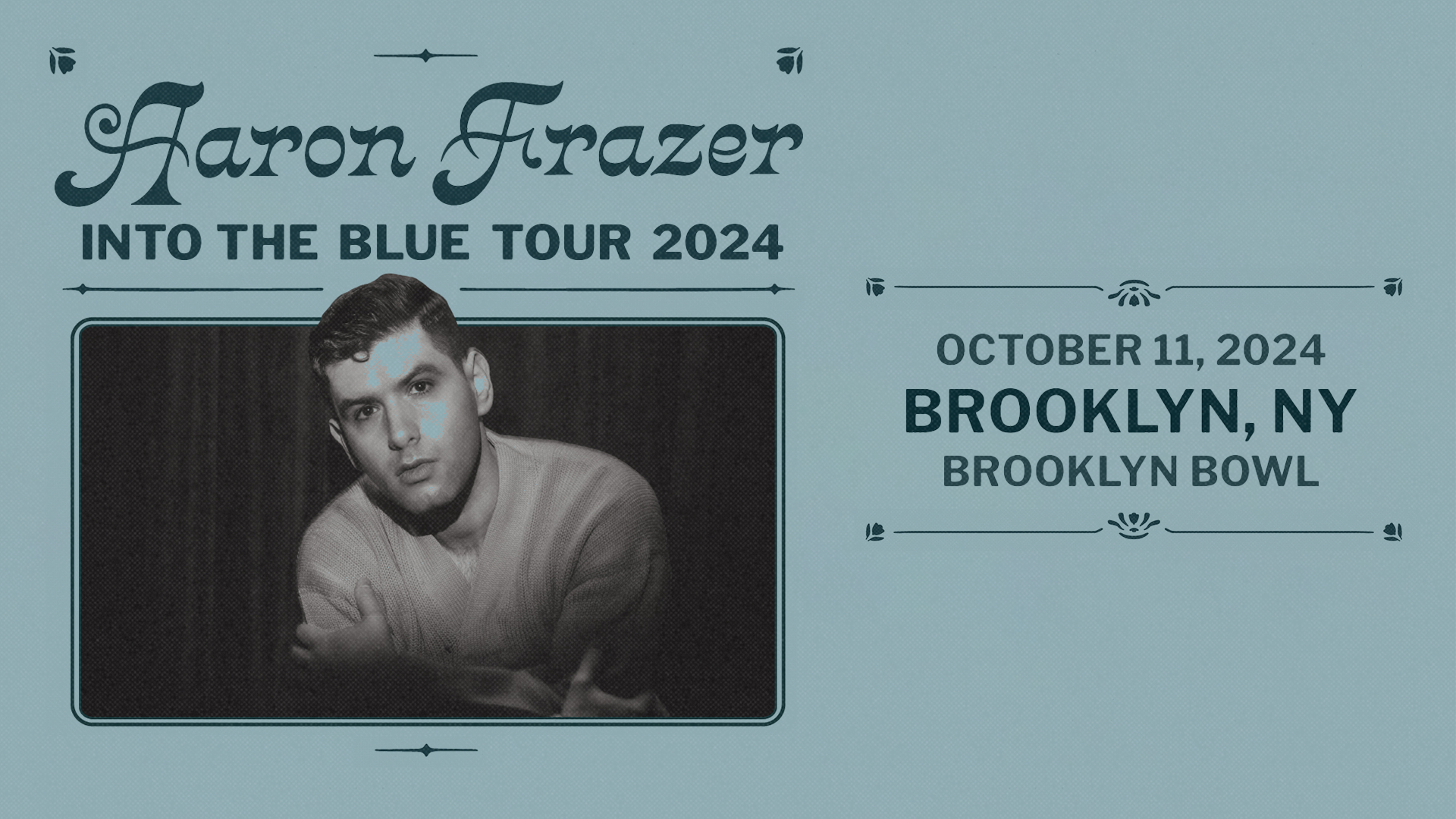
Aaron Frazer: Into The Blue Tour
This bassist will never forget his late-'80s stage dive gone horribly wrong in Cincinnati
Emerging from the 1980s Los Angeles punk scene, Bad Religion has since established itself as one of the most influential bands contributing to the modern pop-punk sound. I recently spoke to bassist Jay Bentley about the group’s origins, its legacy and about a long-anticipated co-headlining tour with fellow SoCal rockers Social Distortion , which makes a stop at Andrew J. Brady Music Center Sunday, May 12.
Q: If you remember a story from touring through Cincinnati, I would love to share it.
A: We were either on the “Suffer” tour or the “No Control” tour – '88 or '89. I'm pretty sure it was at Bogart's. I was just hammered. And I jumped out into the crowd. I remember this vividly. After I cleared the first two people, I realized there was no one behind me. I just landed on the ground. I’ll always remember that.
Q: You met lead singer Greg Graffin and guitarist (and Epitaph founder) Brett Gurewitz in high school in Woodland Hills, Los Angeles. What about growing up there influenced the style of music that you make?
A: Greg and I moved to Woodland Hills at the same time. Greg sang choir. I always fancied myself a guitar player. Then Quiet Riot (with guitarist Randy Rhoads) played at my high school, and I said, “I'm never going to be that good.” A friend of mine took me to see The Clash in 1979, and I thought, “I can do that.”
Need a break? Play the USA TODAY Daily Crossword Puzzle.
Brett was in a band called The Quarks, which was more new wave than punk. Brett wanted to get away from that and told Greg so. We all wanted to find a band that matched our skill level. We were 15 years old. The technical ability to play punk rock was very appealing.
We just knew what we didn't want to be. You get labeled based on what bands you're hanging out with. We were kids in the punk rock scene. These were the shows that we were going to, and they were the shows we were opening for.
We all realized that punk was less about music and more about your intellect. It was never about being stupid and destructive. It was always about thinking that there's something better around the corner if we could just get there.
Q: You played with Wasted Youth and Circle Jerks. It seems like SoCal had a really collaborative scene in the early '80s.
A: If you went to any given show in 1980, there would be 20 people there – all the people that were in the other bands. It was gross, but it was our gross. The Clash would come to town and 5,000 people would show up and we’d be like, "Where are these people coming from?" The scene itself was pretty small, and we all knew each other very well.
Q: Was there a specific point when you decided music was what you wanted to do as a career?
A: When I was younger, naive, I sold all my gear. By '83 I went to work in a machine shop, and I was fine with that until I wasn't. And I came back and started playing in late '86, and I enjoyed it. It was a reason to go and see friends and drink and cause trouble.
In 1993, we were talking about moving to a major label. All of a sudden we were going to make a commitment to be touring musicians. I was driving a forklift at Epitaph at the time, and I said, “I'm going to leave my job and I'm going to play in this band full-time.” It’s still terrifying 30 years later.
Q: Epitaph is a huge fixture in the punk rock revival of the '90s. When, if ever, did you all realize that West Coast punk was going to be as widely influential as it has been ?
A: Never. West Coast punk rock isn't really a thing. Nirvana came out and the word “grunge” got tossed around. But grunge wasn't a thing – Nirvana was a thing. Southern California punk rock and that lifestyle came to America through the Vans Warped Tour.
When we're in Lincoln, Nebraska, with a half pipe and motocross dudes, and we're out there drunk playing on a stage at three in the afternoon – that's just an average Tuesday in Woodland Hills. We're just playing music and riding skateboards in pools. It was just this entire encompassing thing from what you wore to what you were listening to.
Q: "Age of Unreason" is your most recent full-length album, and you've released a couple of singles and gone on some pretty big tours since. How has the songwriting process evolved since you started out?
A: Greg and Brett write 99.99% of everything. They've gotten much better at their craft. As far as subject matter, all you have to do is wake up. For a band like us, you read the newspaper, or you watch the news or whatever, and there's something to write a song about.
For "Suffer," we wrote a lot of songs about what it was like to be a young man in America in 1988. At the end of that year, we were fortunate enough to travel to Europe and go see the other parts of the world, which was super eye-opening. Coming back, we started writing songs about what it was like to be a human on planet Earth in 1991.
You realize it doesn't matter whether you live in San Diego or Saudi Arabia. If you're a father, you worry about your kids and you think about what tomorrow might bring. You worry about all sorts of things as a human on the planet. It didn't change the direction of the band, but it helped widen our perspective of what we were trying to talk about.
People really want to hand us this flag of political activism. We're not political, we're social. We're about human affairs. That's what we've always been about. Whether it comes easy is on Brett and Greg.
Q: You guys have been coming up with Social Distortion pretty much since your first show. Tell me about your relationship.
A: Bad Religion and Social Distortion are the last two bands standing of the third wave of 1979-1980 Los Angeles punk rock. We've been pretty consistent about going on tours and being productive. We've been talking about making this happen for the last 18 years.
It's reminiscent of what was happening in Los Angeles in 1980. Of the 25 or so bands that were always playing around, every band had such a unique sound. If you were a punk rock band, you didn't want to sound alike. It works so well together to show you, this is this band – this is our band.
Social Distortion and Bad Religion
- When: 7 p.m., Sunday, May 12.
- Where: Andrew J. Brady Music Center, 25 Race St., Downtown.
- Tickets: $49.50-$79.50.

IMAGES
VIDEO
COMMENTS
Bad was the first solo concert tour by American singer Michael Jackson, launched in support of his seventh studio album Bad (1987). The 123-show world tour began on September 12, 1987 in Japan, and concluded on January 27, 1989 in the United States, and sponsored by soft drink manufacturer Pepsi.It grossed a total of $125 million, making it the second highest-grossing tour of the 1980s after ...
Bad was the first solo concert tour by American singer Michael Jackson, launched in support of his seventh studio album Bad (1987). The 123-show world tour began on September 12, 1987 in Japan, and concluded on January 27, 1989 in the United States, and sponsored by soft drink manufacturer Pepsi. It grossed a total of $125 million, making it the second highest-grossing tour of the 1980s after ...
Dave Hogan / Getty Images. Michael Jackson performs on stage during his "BAD" concert tour held at Wembley Stadium, London on July 15, 1988. Nine months and two weeks after the album's release, five songs from Bad—"I Just Can't Stop Loving You" (with Siedah Garrett), "Bad," "The Way You Make Me Feel," Man in the Mirror" and "Dirty Diana"— had reached the top of the ...
The 1984 Victory Tour saw MJ take on a more confident, captivating stage presence. He seemed more in control of his element, more confident. By 1987, Jackson showcased a new plateau of live…
On June 29, 1987, Jackson's manager Frank DiLeo announced the singer's plan to embark on his first solo world concert tour. T he tour began in Japan, marking Jackson's first performances in the country since 1973 as part of The Jackson 5. The first nine scheduled concerts that began on September 12 sold out within hours, and five more were added due to high demand.
Bad era (1985-1989) September 25, 2018 Fred Colby. MJ ON TV, RADIOS ANS RED CARPETS. March 27, 1985 : Michael attends the futuristic musical "Starlight Express" in London and meets the cast backstage. March 28, 1985 : Michael attends the unveiling of his wax statue at Madame Tussaud's wax museum in London. 8000 fans gather to get a ...
Live at Wembley July 16, 1988 is a live concert DVD by American recording artist Michael Jackson released on September 18, 2012. It was included with the Bad 25 reissue, as well as by itself. This is the third Jackson tour stop released on home video (after the DVD Live in Bucharest: The Dangerous Tour and the VHS HIStory World Tour: Live in Seoul).The recording is a performance of the Bad ...
Even more than his personal amusement park and pleasure palace, Bad represents Jackson creating a space for himself, apart from the rest of the world, where he could be the star he wanted to be ...
Bad World Tour: 1987 - 1989. The Bad Tour was Michael's first solo tour, which started on September 12th 1987 and ended on January 27th 1989. It consisted of 123 concerts and was seen by approximately 4.4 million people. It was during this tour that Michael set his own record by performing to 120,000 people in one concert in Liverpool, England.
Credit : Bad Tour Era and Tizianohttps://youtube.com/channel/UCSG5-NNwxYTxyN2mJIy2kBwAnother Part Of Me (version NBC)https://youtu.be/y9aSIwJ6rRUMichael Jack...
MJ History: The Bad Tour - March 30, 1988. March 29, 2015. The Bad Tour arrived in Connecticut for the first of a two-night stand today in 1988. Did you know that Sheryl Crow was a back-up singer on the tour? Hear what she has to say and learn more interesting facts about the Bad album and tour in the BAD25 documentary directed by Spike Lee ...
Jackson performs during his 'Bad' tour, 1988 Photograph: MARK ELIAS/AP. ... Jackson led his dancers, singers and musicians, all fearsomely well-drilled and rakishly handsome, through less a ...
The Bad World Tour is the first worldwide concert tour by Michael Jackson. It was launched in support of the artist's seventh studio album, Bad (1987) and lasted sixteen months, spanning from September 12, 1987 until January 27, 1989. The shows were sponsored by Pepsi. The tour became the second highest grossing tour of the decade, as well as one of the most attended tours in history. As ...
Bad World Tour - 6/19/1988. June 19, 1988. June 19, 1988. Platz der Republik (Reichstag Building/Berlin Wall) Berlin, West Germany.
Bad was the first solo concert tour by American singer Michael Jackson, launched in support of his seventh studio album Bad (1987). The 123-show world tour began on September 12, 1987 in Japan, and concluded on January 27, 1989 in the United States, and sponsored by soft drink manufacturer Pepsi. It
The BAD Tour ended January 27, 1989, after a record-setting 16-month run. The final shows featured a five-night stand in Los Angeles. All in all, Michael performed 123 shows in 15 countries for 4.4 million people.
Michael Jackson Bad Tour Memorabilia. August 16, 2022. MJ fan Andy Vega recently shared his Bad Tour memorabilia, including his ticket stub, a tour program, and a bandana, from the October 18th, 1988 concert near Cleveland, Ohio. Show off your ticket stubs, VIP passes, tour programs and other concert merch with the hashtag #MJTours.
The Dangerous World Tour was the second world concert tour by American singer Michael Jackson and was staged to promote his eighth studio album Dangerous. The tour was sponsored by Pepsi-Cola.All profits were donated to various charities including Jackson's own "Heal the World Foundation".It began in Munich, Germany, on June 27, 1992, and concluded in Mexico City, Mexico, on November 11, 1993 ...
Mee the 10 dancers that joined Bad Bunny on his "El Ultimo Tour del Mundo" trek, sending a message of inclusivity, hope, and change.
Bad tour 50° concertStadio Flaminio - Rome, ItalyPrevious concert: Minneapolis (May. 6, 1988)https://youtu.be/UDyKN2JMvjINext concert: Rome (May, 24, 1988)ht...
Michael Jackson's "Bad Tour" rehearsals were defined by meticulous preparation and an emphasis on perfectionism, particularly in the realm of dance. From 198...
INFO:Michael Jackson performing Bad in Monza, Italy at Brainteo Stadium for a sold out audience of 46.000 people. Performed on July 7th, 1992 as part of the ...
Walking tour around Moscow-City.Thanks for watching!MY GEAR THAT I USEMinimalist Handheld SetupiPhone 11 128GB https://amzn.to/3zfqbboMic for Street https://...
As the longest-running Michael Jackson tribute band, and the only one to predate his untimely passing, Who's Bad has awed even the skeptics, selling out nearly 50 venues in the United Kingdom including London's O2 in December of 2010, the venue where the King of Pop was slated to end his career with a 50-show "This Is It" concert series.
Bad Religion's tour with Social Distortion makes a stop at Andrew J. Brady Music Center Sunday, May 12. After overturned convictions, county prosecutor launches integrity unit